For jaw-dropping views of Mount Rainier National Park, it’s hard to beat the Skyline Trail Loop.
The entire hike is a beauty. Starting in Paradise, you will hike past lovely Myrtle Falls, through pine forests, and then ascend the slopes to the base of Mount Rainier. From Panorama Point, enjoy spectacular views over the park, and on a clear day you can see as far as Mount Hood in Oregon. Then it is a steep descent back to the Paradise Visitor Center.
This is an essential hike in Mount Rainier National Park and it is one of our favorites. With everchanging views and a chance to get up close to Mount Rainier, this hike is an unforgettable experience.
Skyline Trail Hiking Stats
Distance: 6.2 mile loop
Difficulty: Strenuous
Total Elevation Gain: 1,900 feet
Starting Elevation: 5,460 feet
Highest Elevation: 7,020 feet
Length of Time: 3 to 5 hours
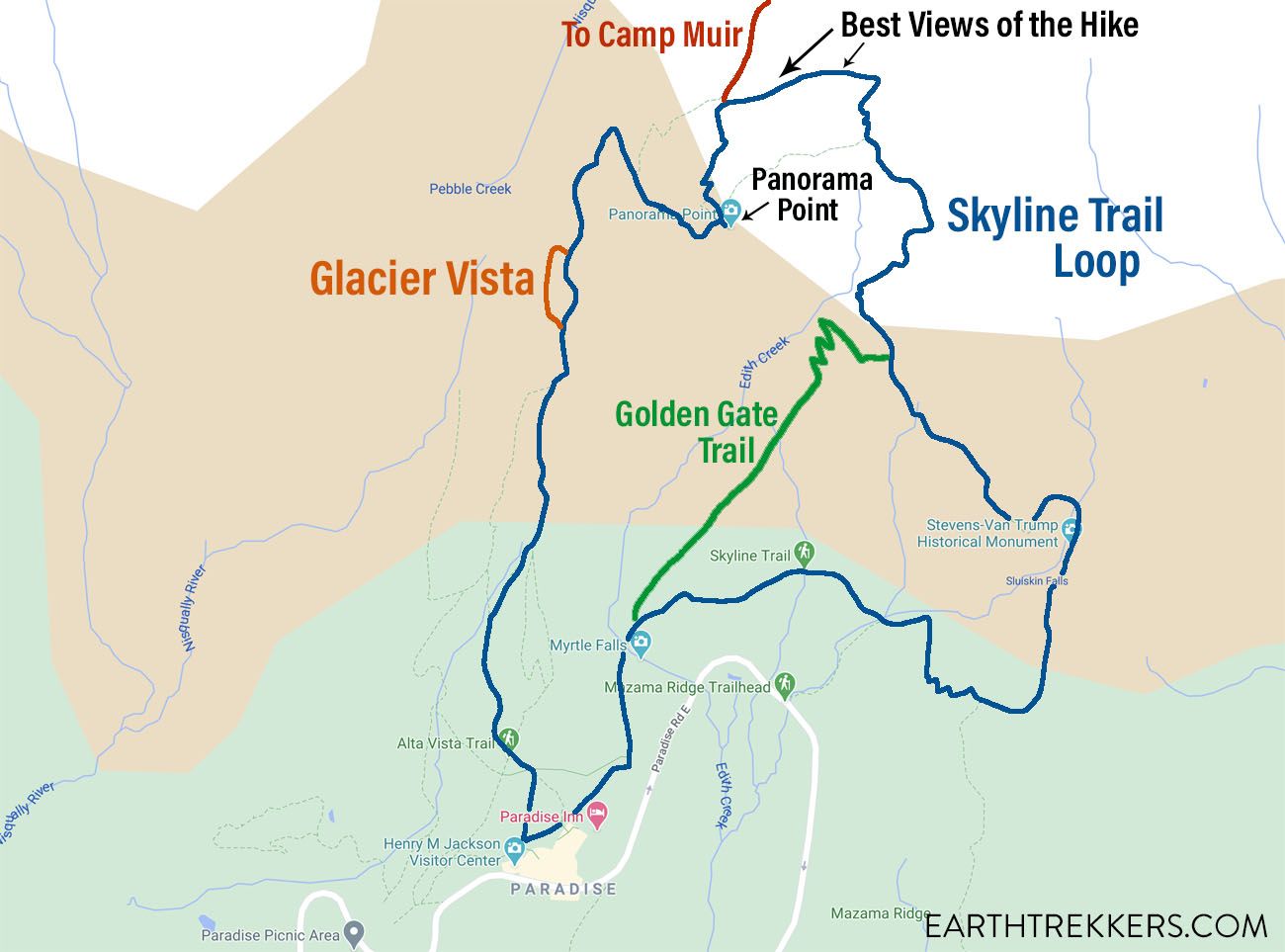

Elevation profile of the hike doing the loop in a counter-clockwise direction.
Please practice the seven principles of Leave No Trace: plan ahead, stay on the trail, pack out what you bring to the hiking trail, leave areas as you found them, minimize campfire impacts, be considerate of other hikers, and do not approach or feed wildlife.
Clockwise or Counter-Clockwise?
Since the Skyline Trail is a loop, it can be done in either direction. We hiked it both directions and based on our experience, it is equally awesome both ways.
There are advantages and disadvantages to each direction.
Skyline Trail Loop: Clockwise
If you hike the Skyline Trail in a clockwise direction, you will have a short, steep climb up to Panorama Point (so you get a majority of the uphill work over with early in the hike). For this entire section of the hike, Mt. Rainier will be smack in front of you, so even though it is a tough climb, you get an amazing view for the first third of the hike. Once you reach Pebble Creek Trail (the trail that continues up to Camp Muir), it is a steady downhill walk and Mt. Rainier will be behind you, so you will have to keep turning around to see it.
Skyline Trail Loop: Counter-Clockwise
If you hike the Skyline Trail in a counter-clockwise direction, it’s a longer but more gradual climb up to Pebble Creek Trail and Panorama Point. For most of the hike, Mt. Rainier is right in front of you. Once you start the downhill walk back to Paradise, Mt. Rainier will be behind you.
Verdict: Which Way is Best?
If you want to get the hard, uphill walk over with quickly, hike the loop in a clockwise direction. If you want to enjoy the view of Mt. Rainier for a longer period of time, hike it counter-clockwise.
If you start this hike early in the morning, I recommend hiking the loop in a counter-clockwise direction, so the sun is at your back for most of the hike.
But really, you can’t go wrong with which direction you choose.
How to Hike the Skyline Trail Loop
Step-By-Step Trail Guide
This trail description is for the counter-clockwise route.
Getting to the Trailhead
The trail starts and ends in Paradise near the Visitor Center. There is a large parking lot but it does fill early, especially on the weekends. Less than a quarter mile away is a second, large, overflow parking lot. By late morning, both of these lots can fill to capacity, so it’s best get here early (no later than 9 am is what I would recommend during peak season) to ensure you get a parking space.
The trail starts between the visitor center and the Paradise ranger station. Look for the paved path and a trail sign indicating that you are on the Skyline Trail.
Myrtle Falls
The first part of the hike is on a paved trail. A half of a mile into the hike you reach Myrtle Falls. Take the staircase down to the viewpoint and enjoy the gorgeous view of the waterfall with Mt. Rainier in the background.
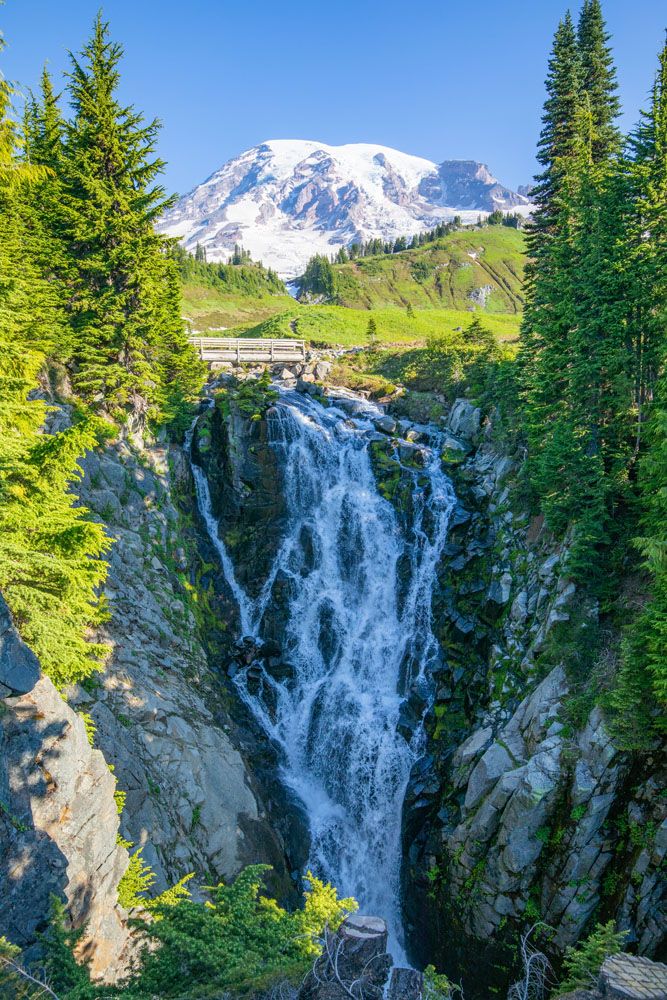
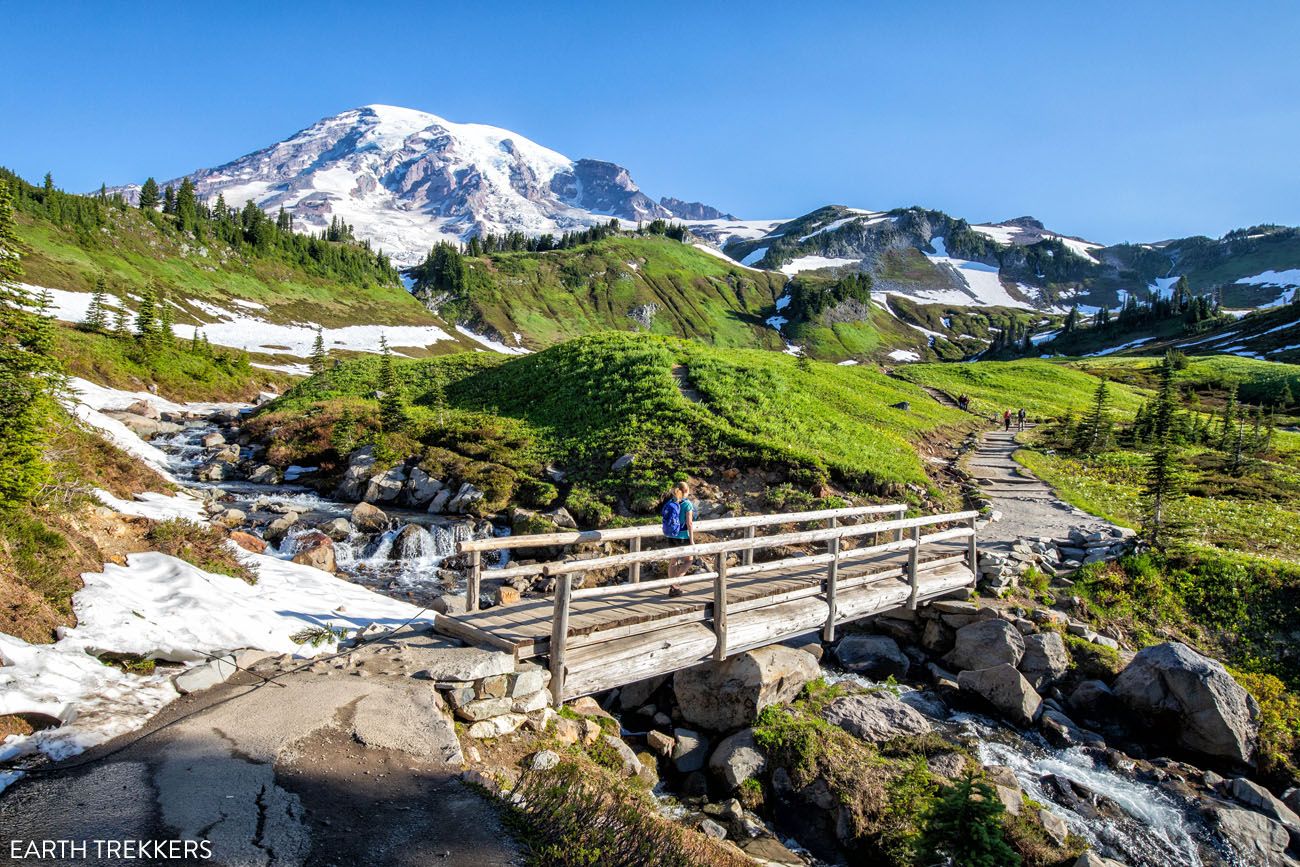
Hiking to Panorama Point
Just beyond Myrtle Falls the paved path is replaced with a dirt trail. At the fork in the trail, stay to the right to continue on the Skyline Trail. If you take the trail to the left (the Golden Gate Trail), it is a short cut. It takes off a big chunk of the Skyline Trail but it is a tough climb up to rejoin the Skyline Trail.
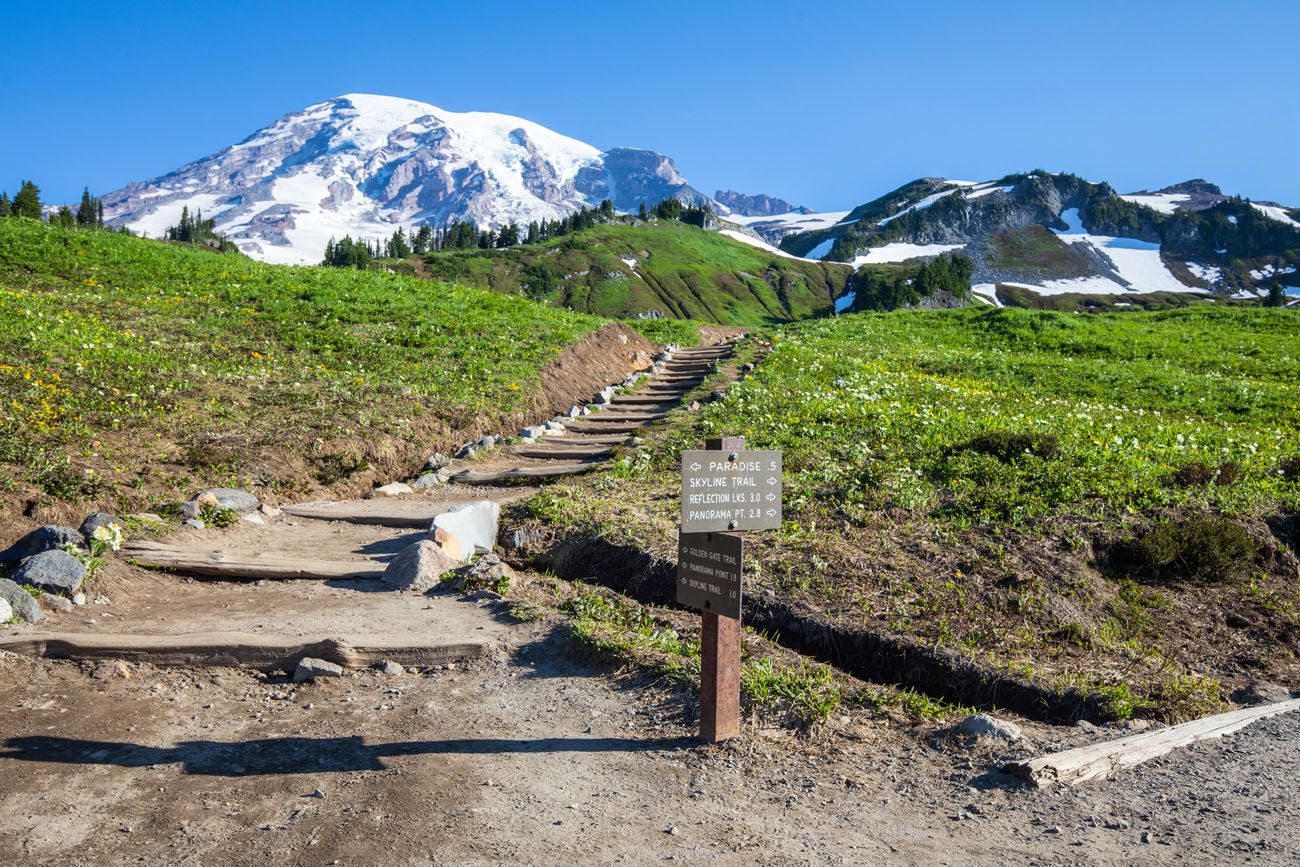
The Golden Gate Trail heads directly towards Mt. Rainier. It’s shorter but much steeper than staying on the Skyline Trail, which continues to the right.
After a brief downhill walk, you will cross several small creeks and then the climbing begins. You climb up out of the forest and then hike along a ridgeline. To your left is Mt. Rainier and to your right are snow-covered mountain ranges and Mt. Adams off in the distance. Even in the summer, you may have to hike through snow.
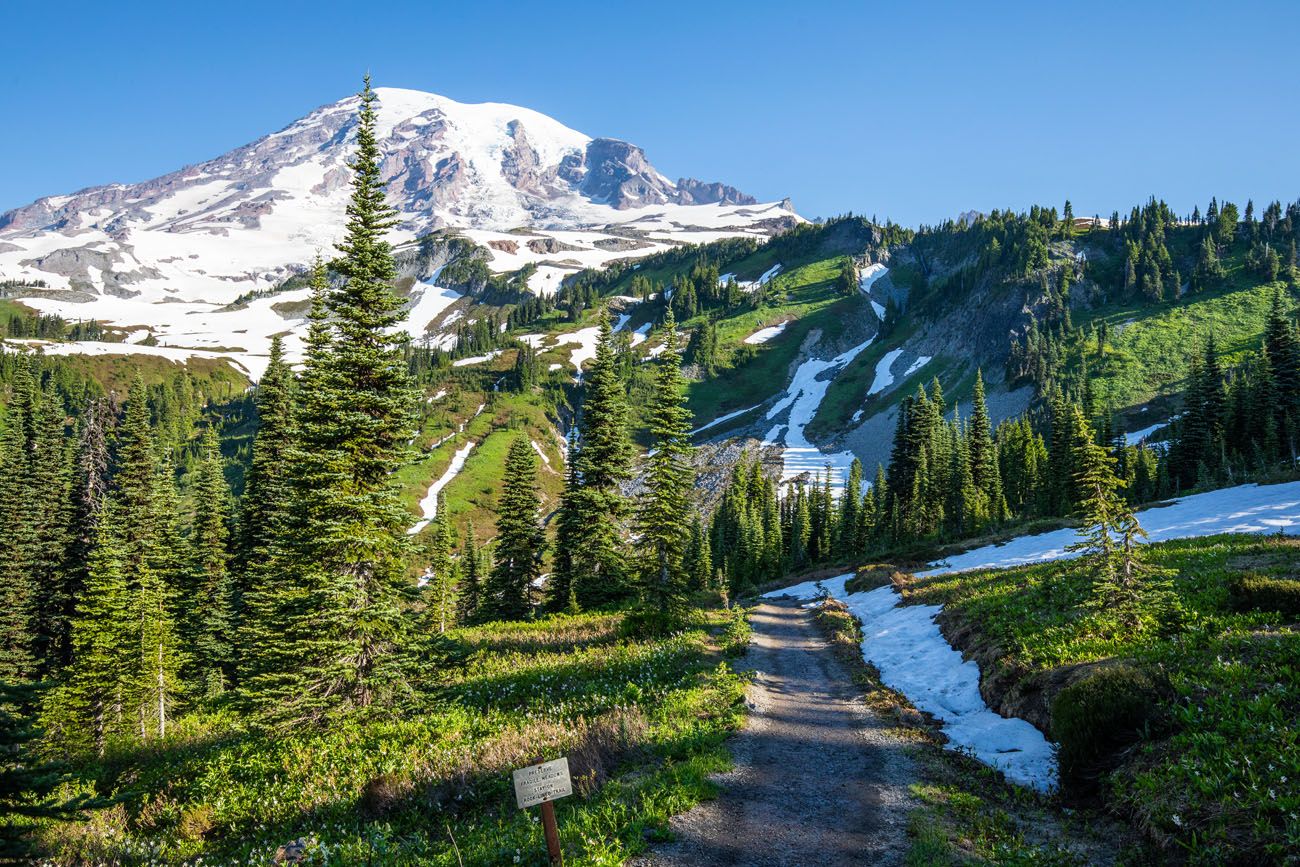
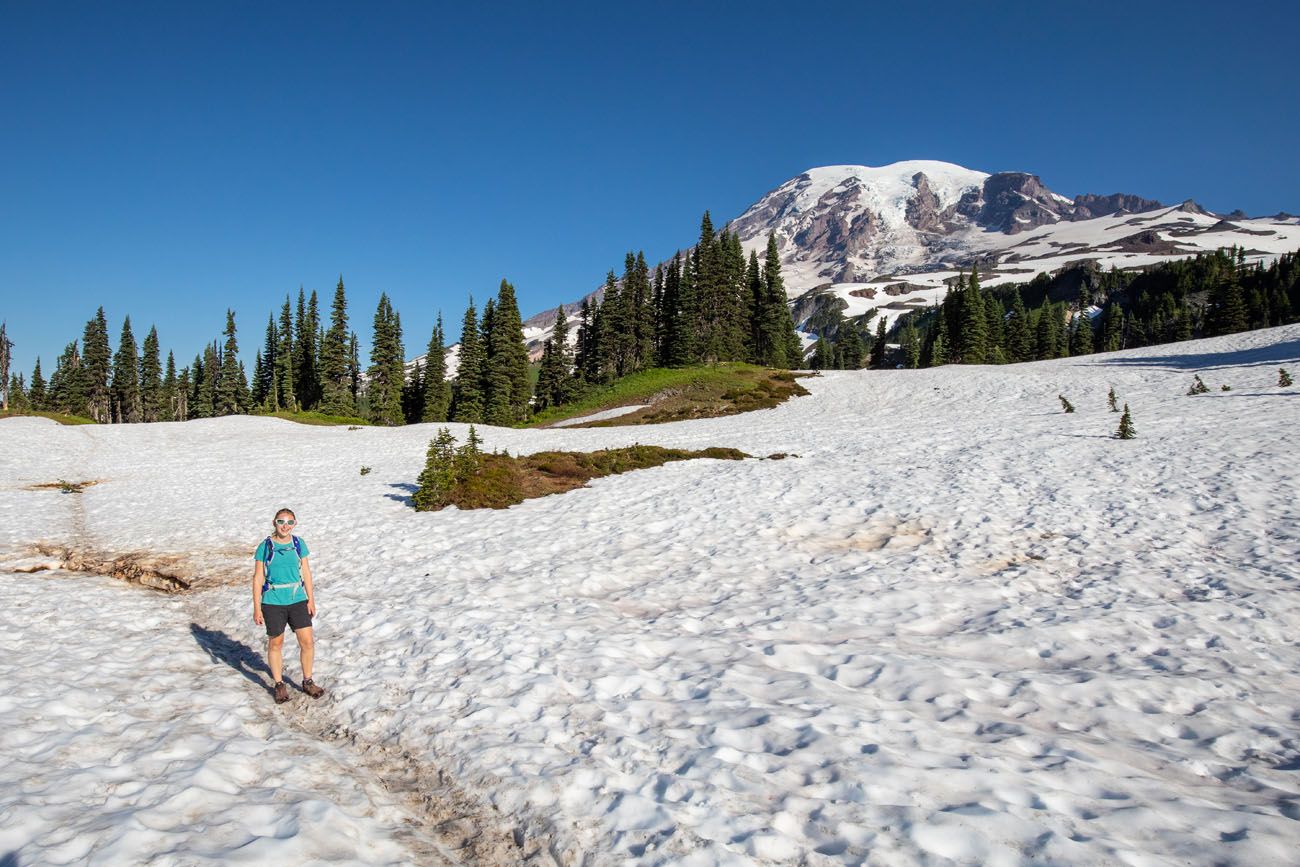
Eventually, you will arrive at the Stevens-Van Trump Monument, which commemorates the location of the campground from where Hazard Stevens and PB Van Trump made the first ascent of Mt. Rainier on August 17, 1870.
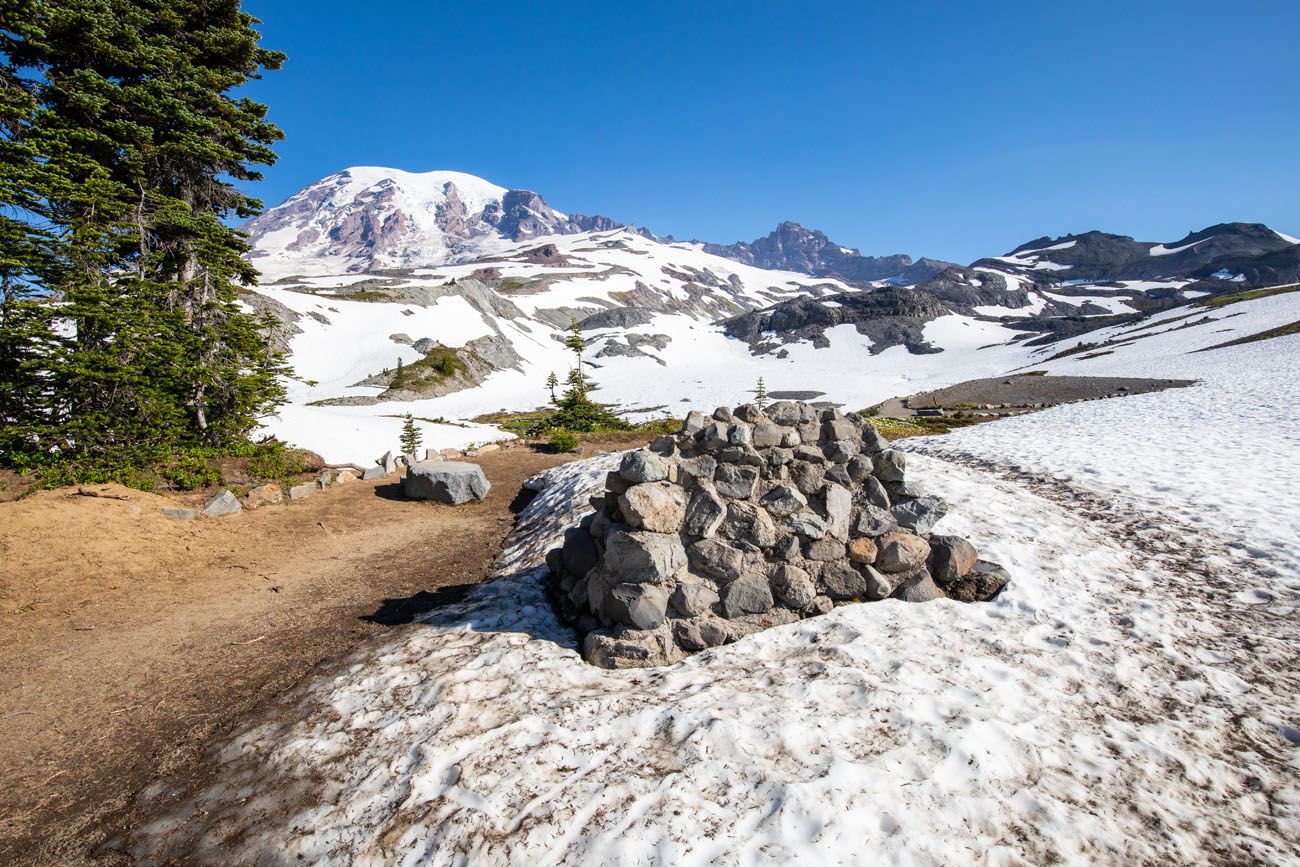
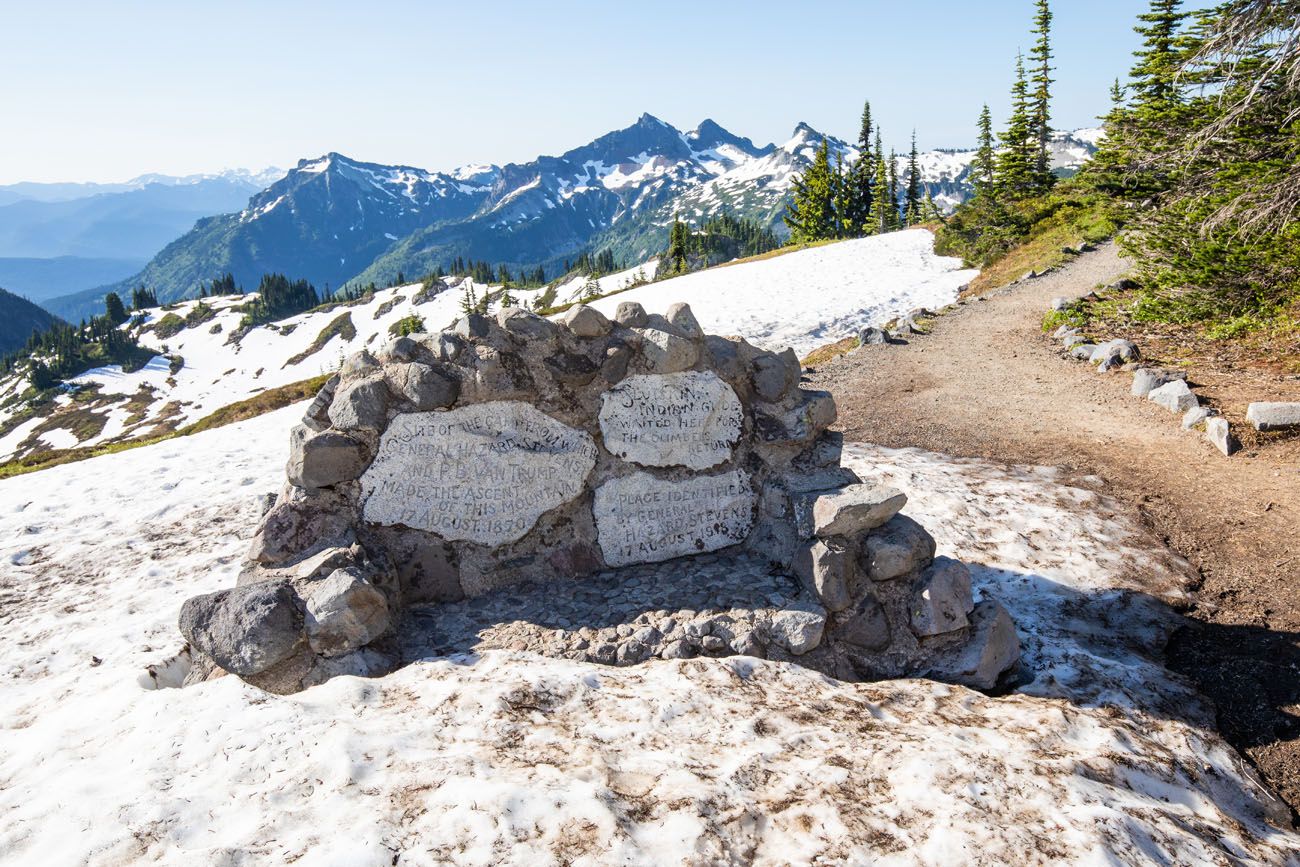
When we did this hike in mid-July, there was still a lot of snow on the ground. From the memorial almost to the highest point of the trail, we hiked across huge patches of snow. This is slippery, tiring, and can slow you down.
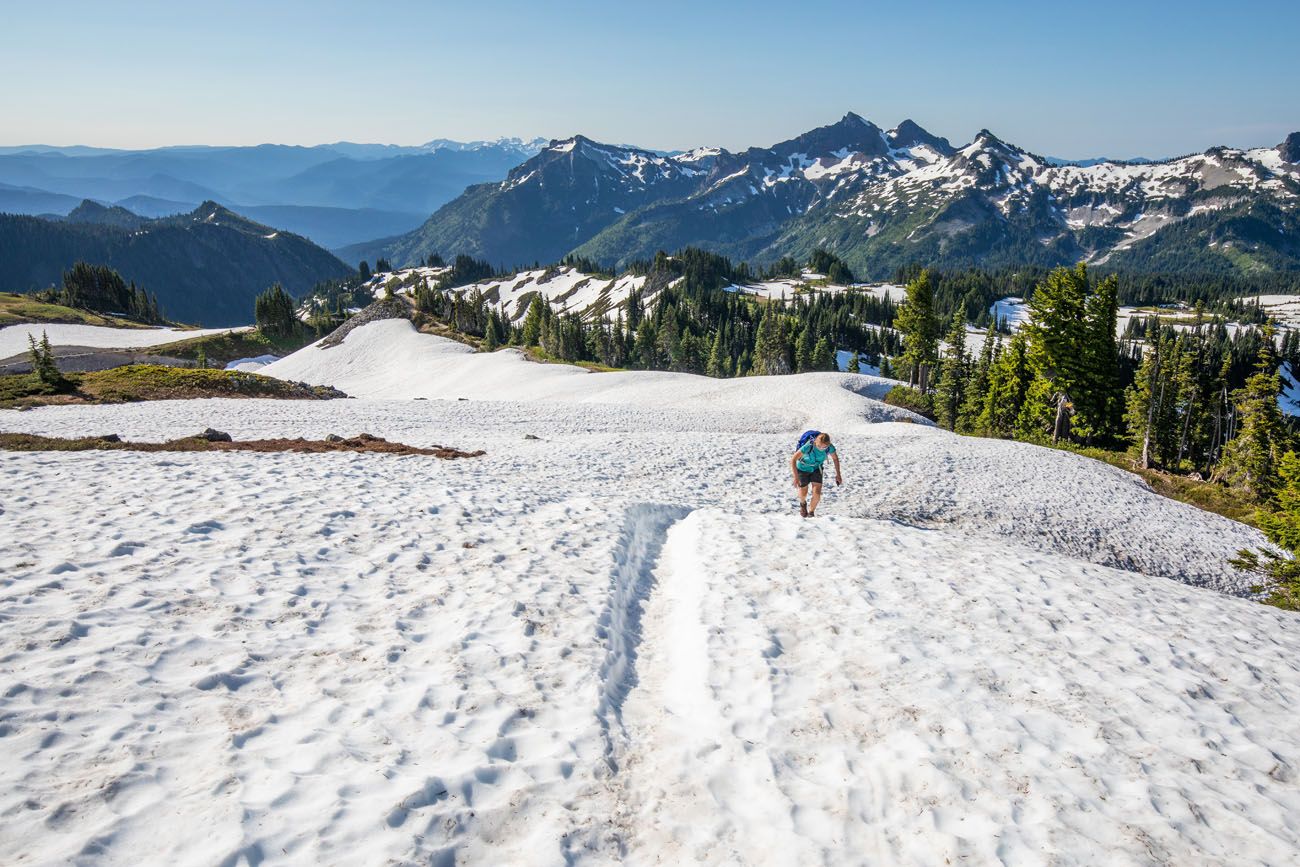
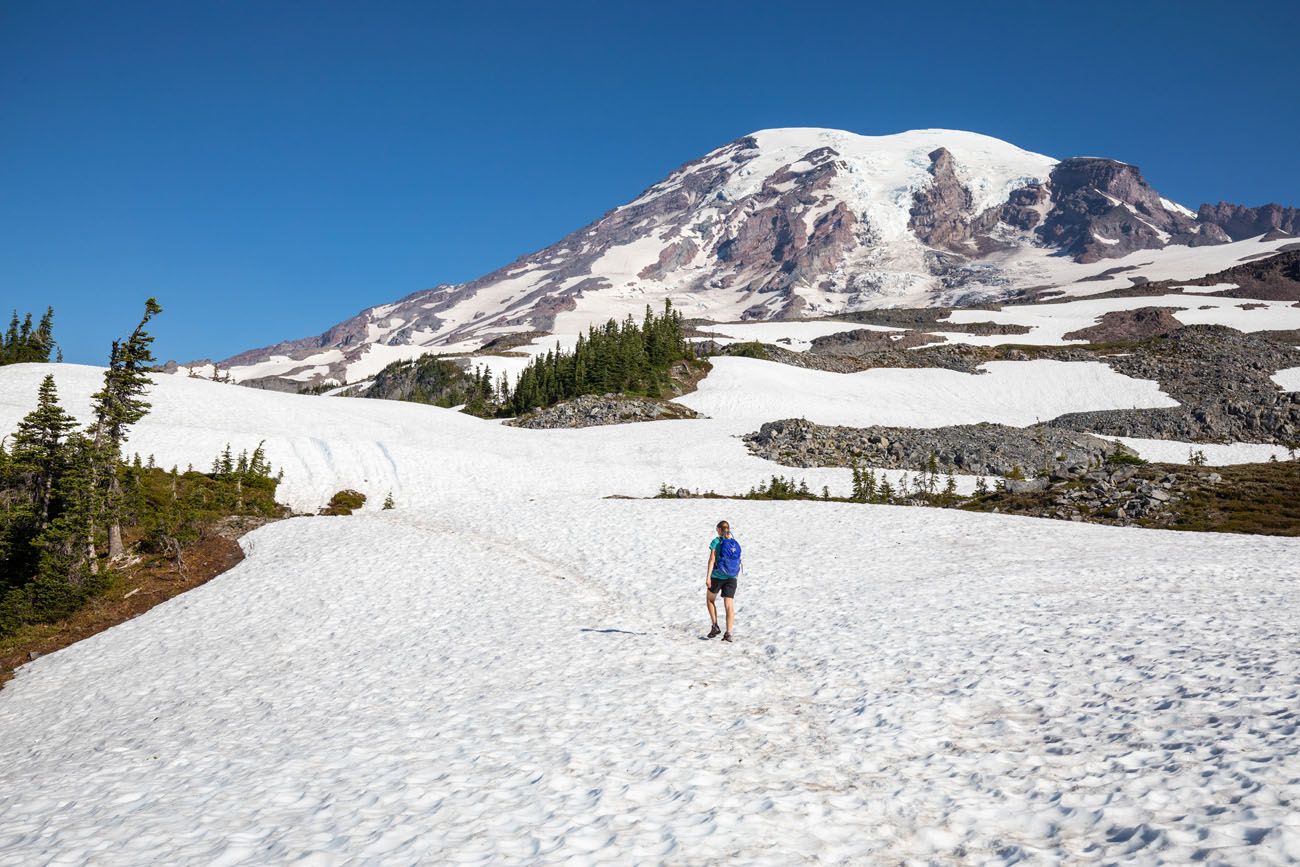
It is also very easy to lose the trail here. In some places, some small flags were placed along the trail, but these can be very difficult to spot. To keep moving in the right direction, we used Google Maps and hiking maps on our Garmin Fenix 5 watches. Fortunately, cellular service is quite good in the Paradise area of the park and we had a few bars of LTE for the entire hike.
Past most of the snow fields, the Golden Gate Trail rejoins the Skyline Trail. As you hike higher, the vegetation disappears and the ground gets to be more rocky and rugged. It’s a tiring hike up to Panorama Point, but the views over the park from the trail here are astounding.
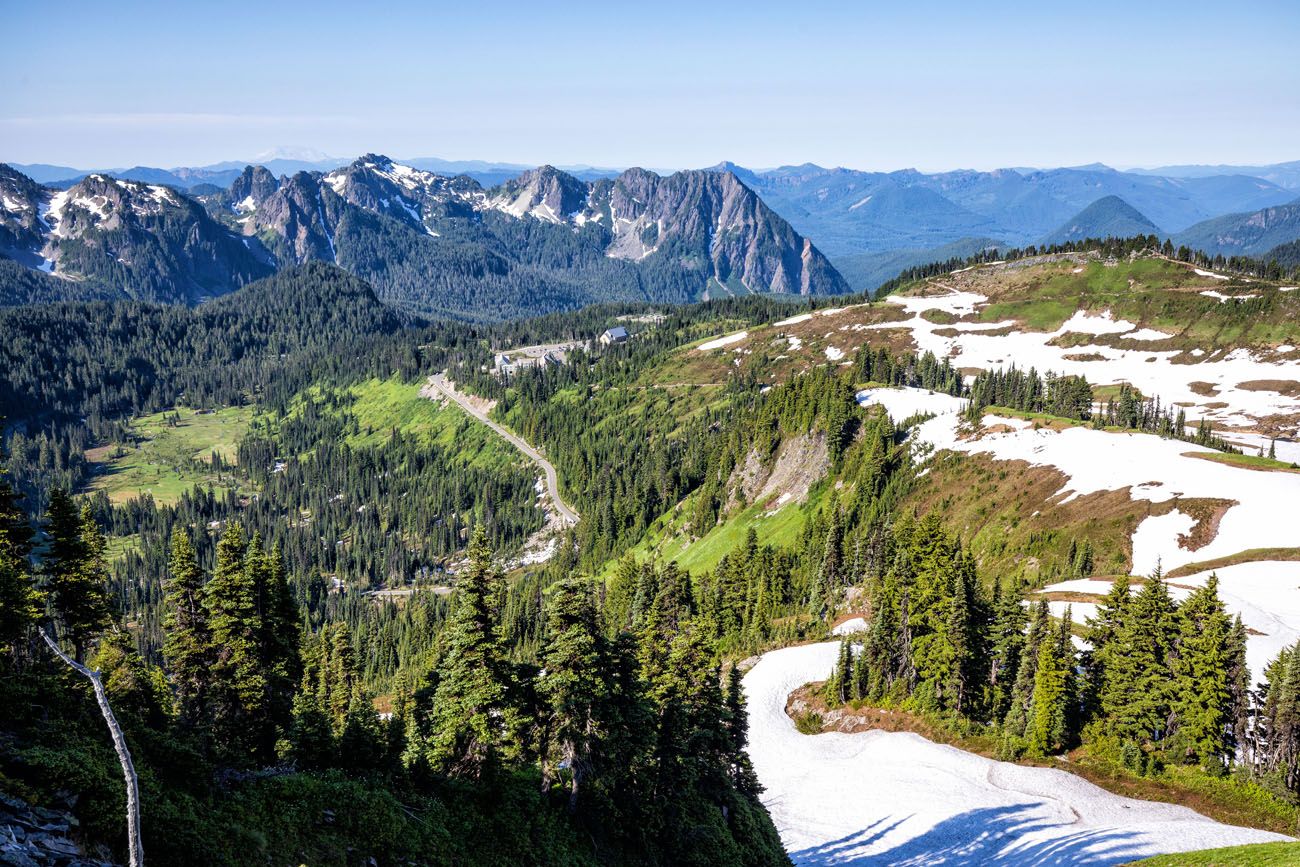
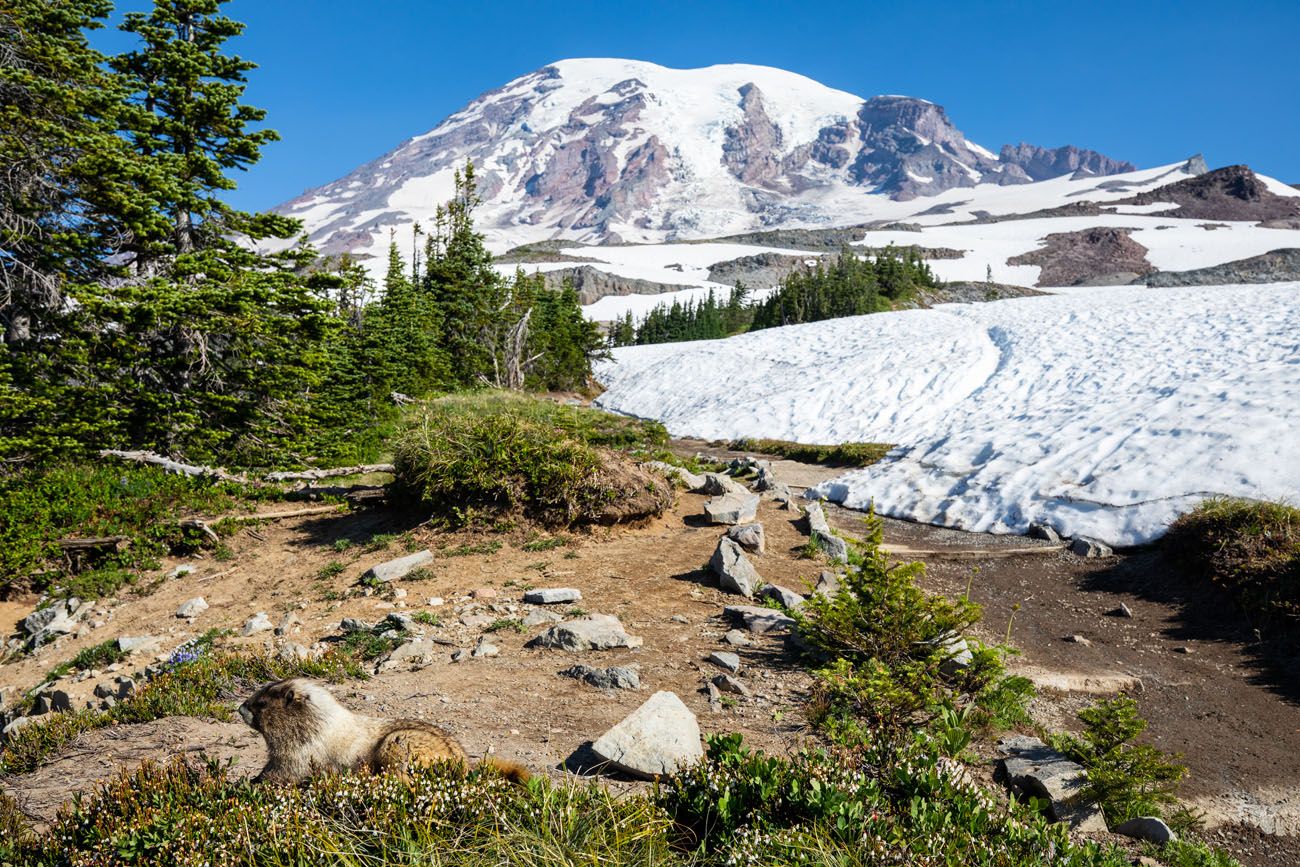
Keep an eye for marmots and mountain goats on the trail.
From the highest point on the trail, you get the best view of the hike. Spread out below you is Paradise. On a clear day, you can also see Mt. Adams and Mt. St. Helens, and if you really look hard, Mt. Hood in Oregon. At this point you are also close enough to Mt. Rainier that you can hear the glacier popping and cracking.
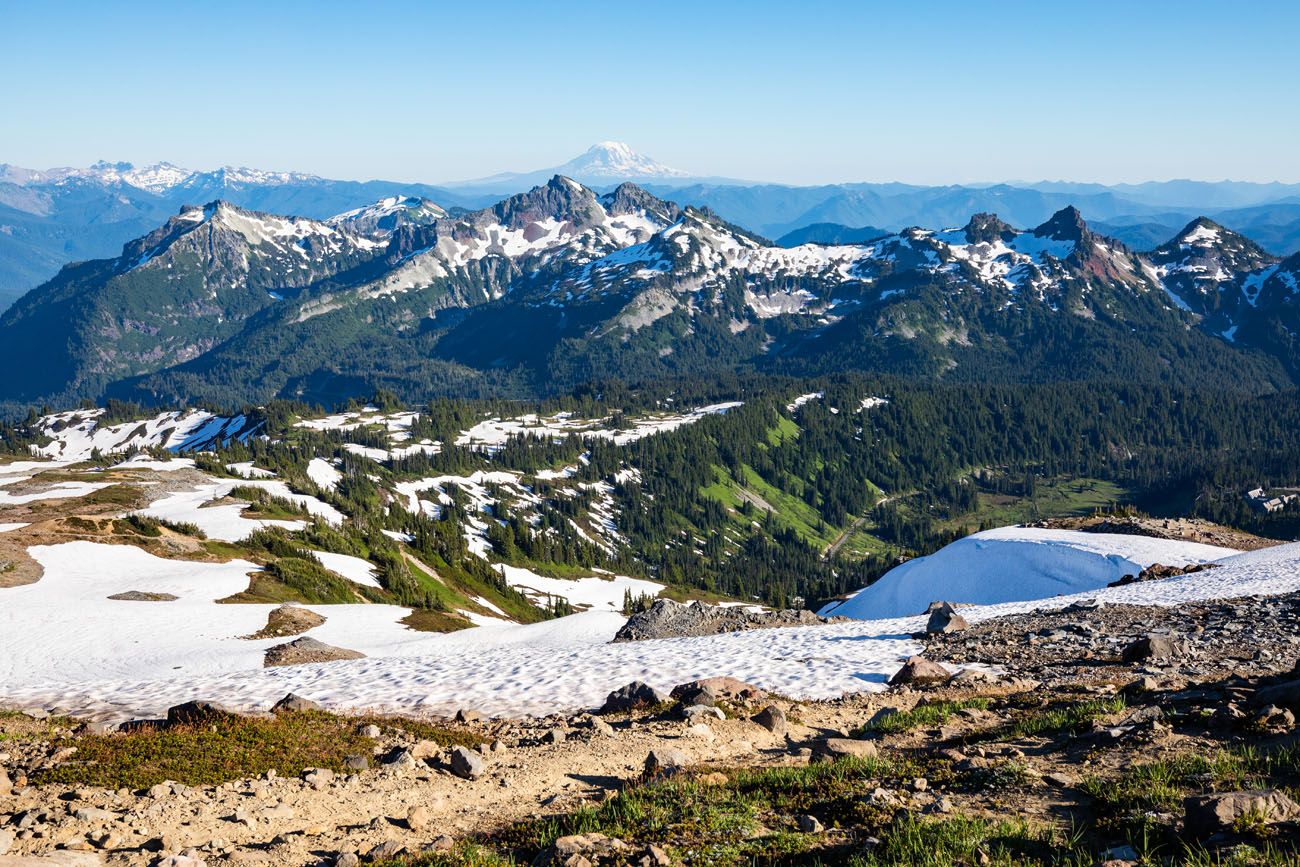
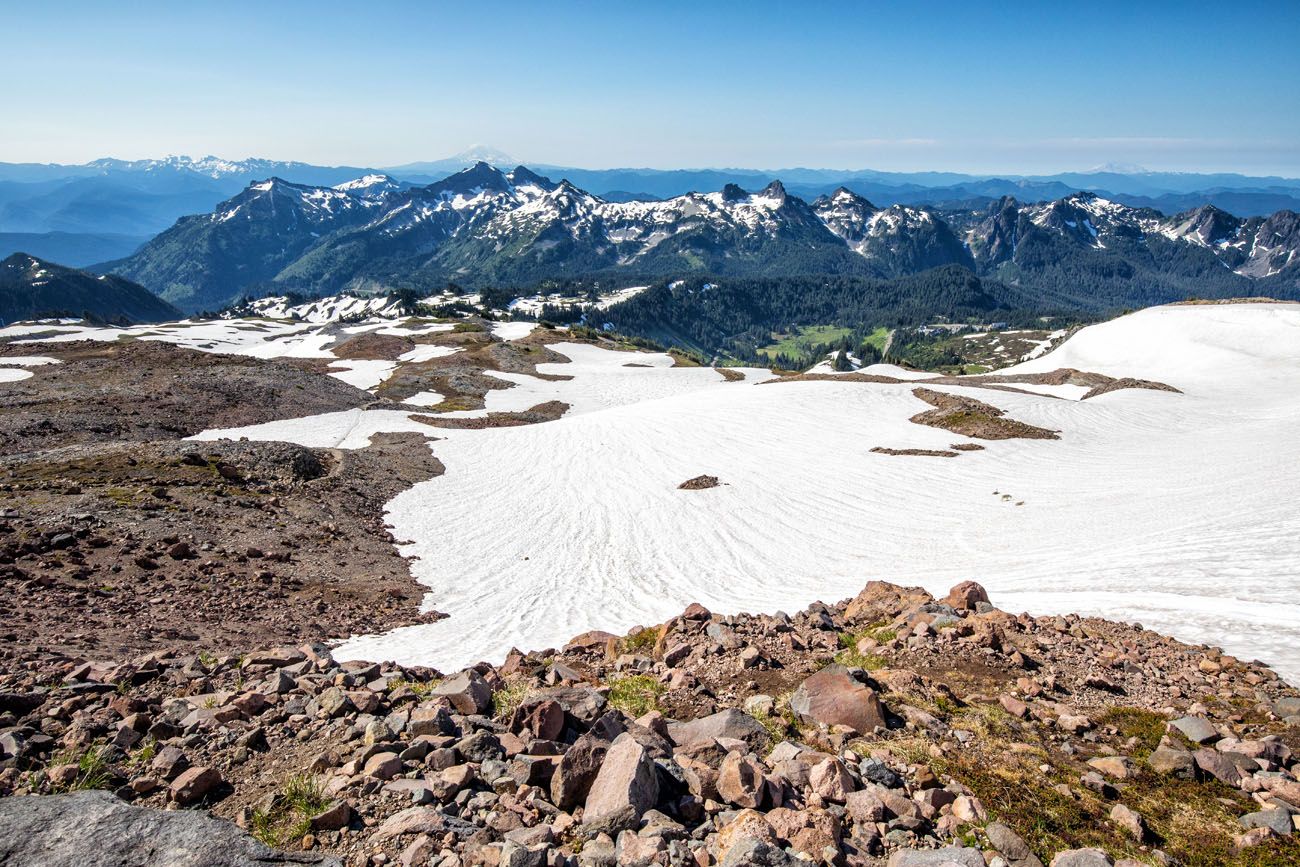
To the right, the Pebble Creek Trail heads up Mt. Rainier. For those hiking to Camp Muir and those who are starting their ascent to the peak of Mt. Rainier, this is trail that takes you higher up the mountain.
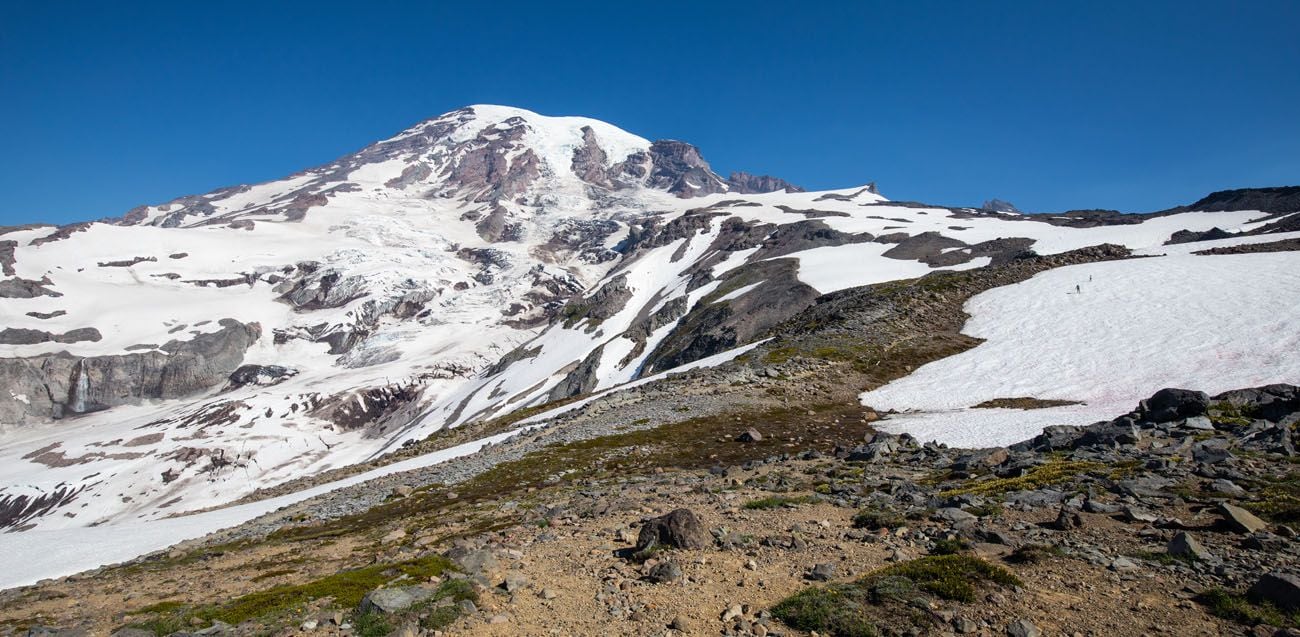
From here, it is a downhill walk back to Paradise. The views are better here than from Panorama Point (just a short distance down the trail from this spot) so take your time and enjoy this view. It’s also a lot quieter. Many people hike out-and-back along the Skyline Trail just to Panorama Point, so expect more traffic on the trail as you head back to Paradise.
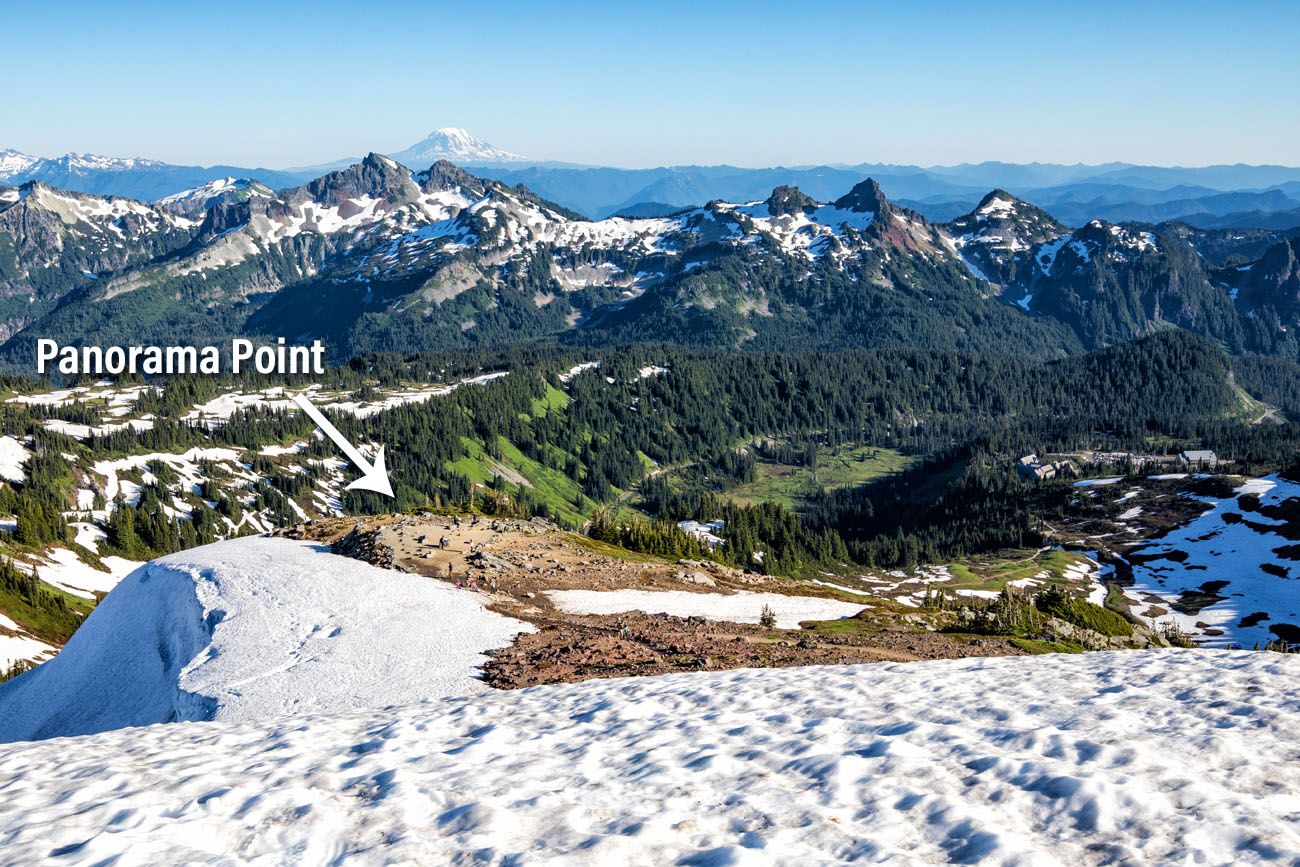
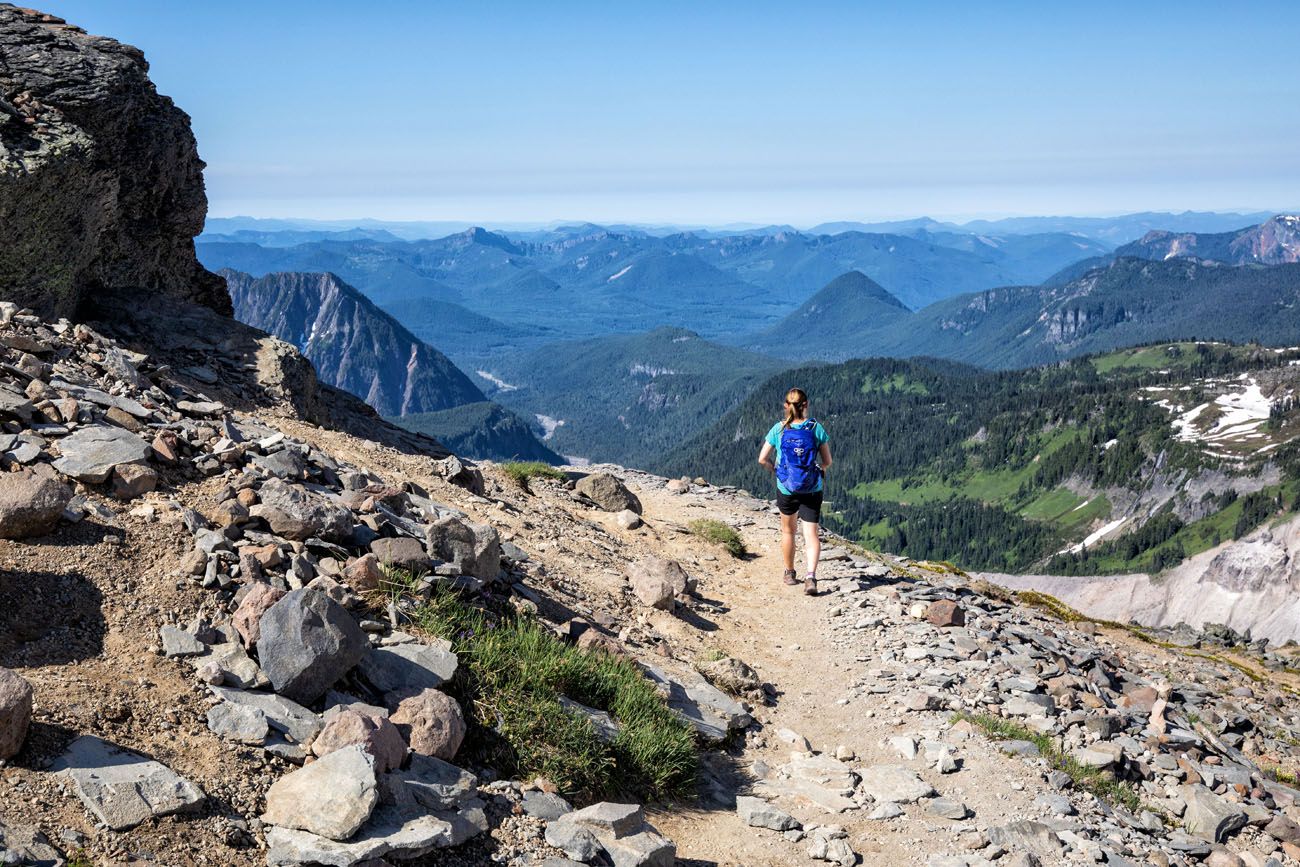
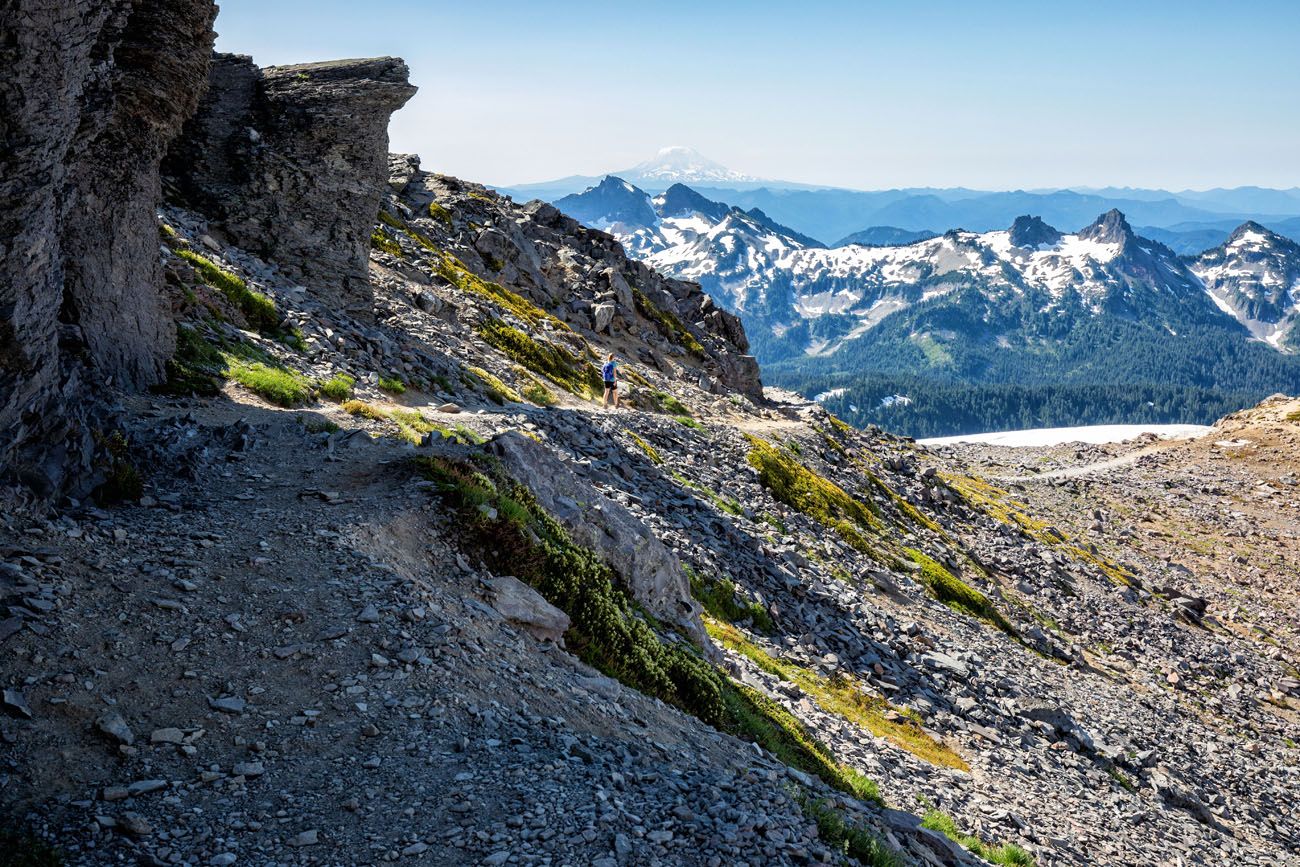
Panorama Point
It’s a short, steep hike down to Panorama Point. The view is similar to what you had just a short time ago, but it’s still worth a quick break to enjoy the view.
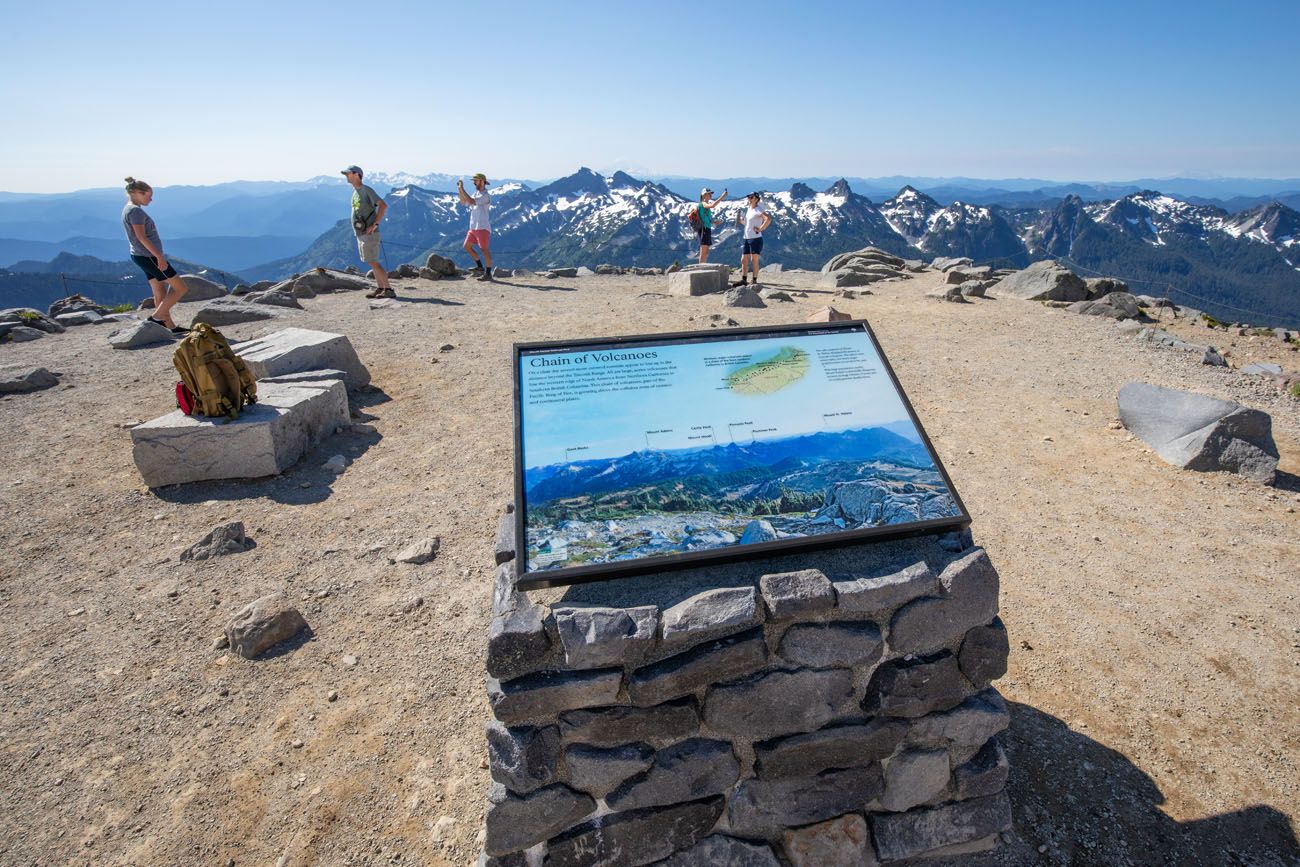
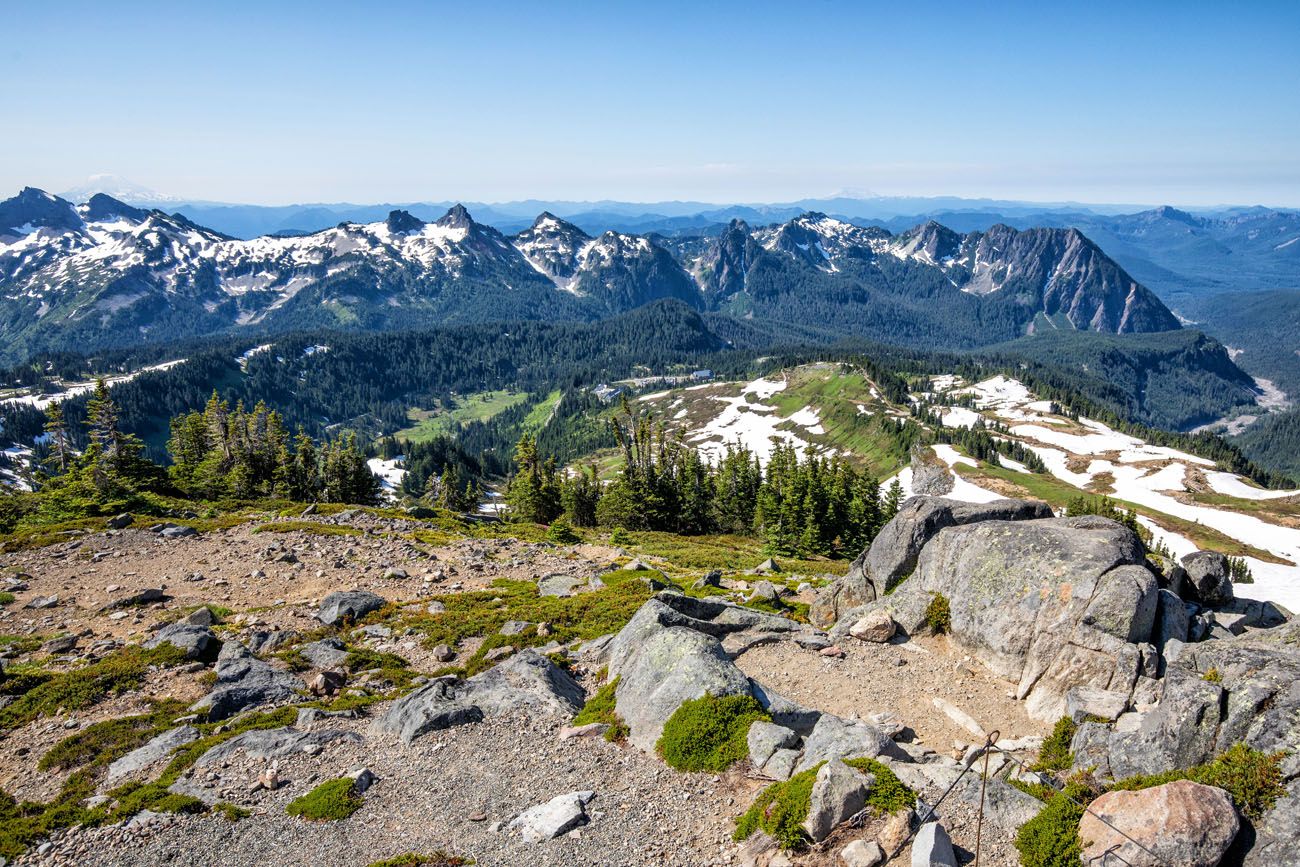
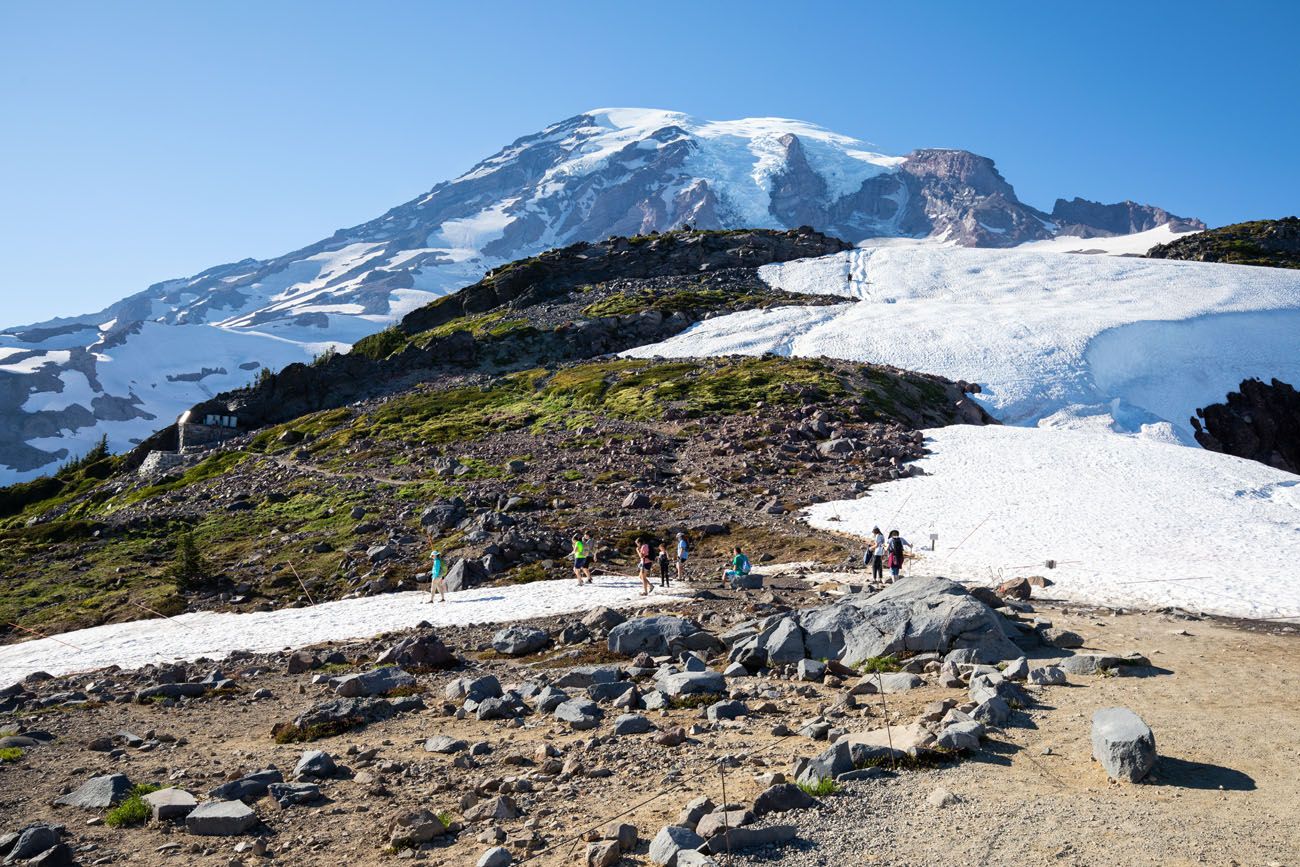
The view up to Mt. Rainier from Panorama Point.
To the Visitor Center
From Panorama Point, it is a downhill walk to the visitor center. Mt. Rainier is now behind you, so don’t forget to turn around and look back at it occasionally.
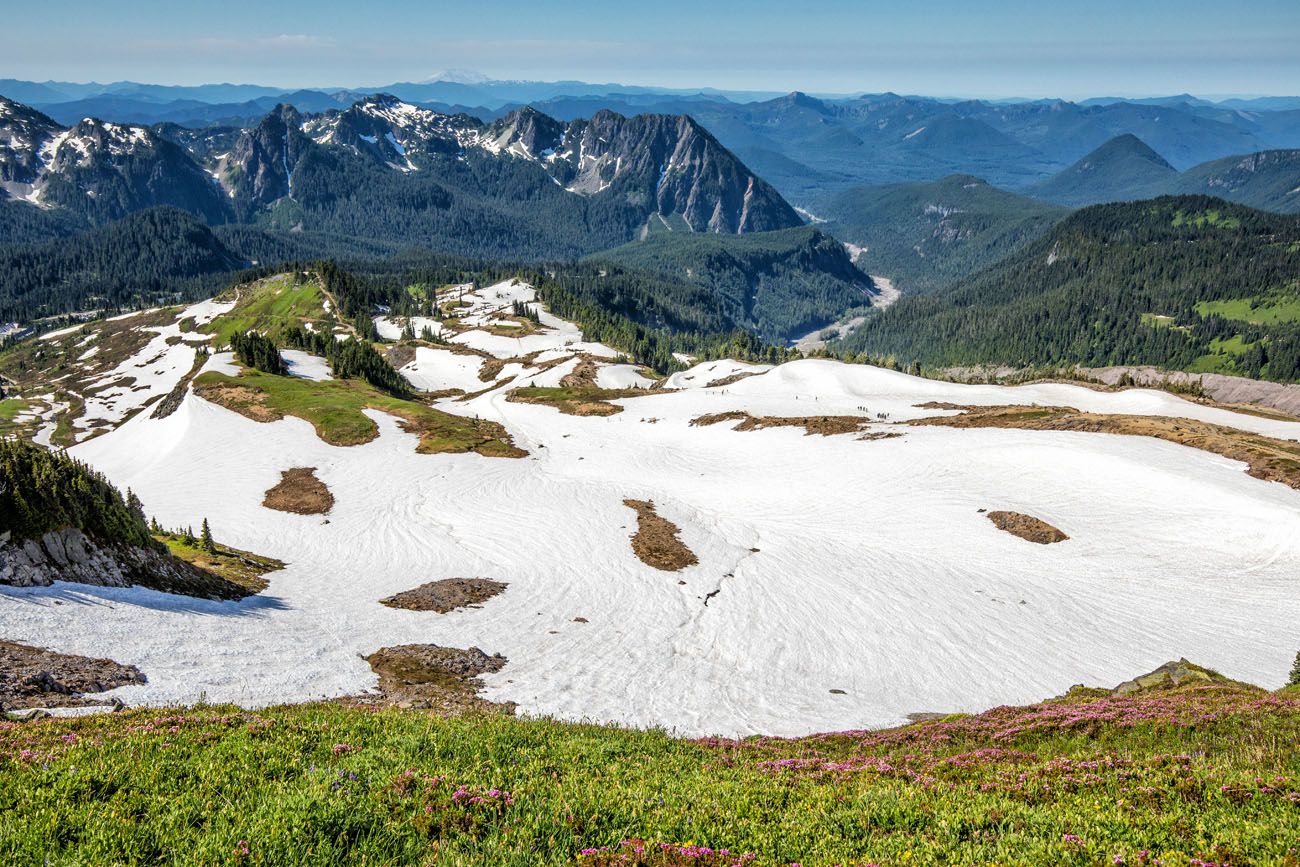
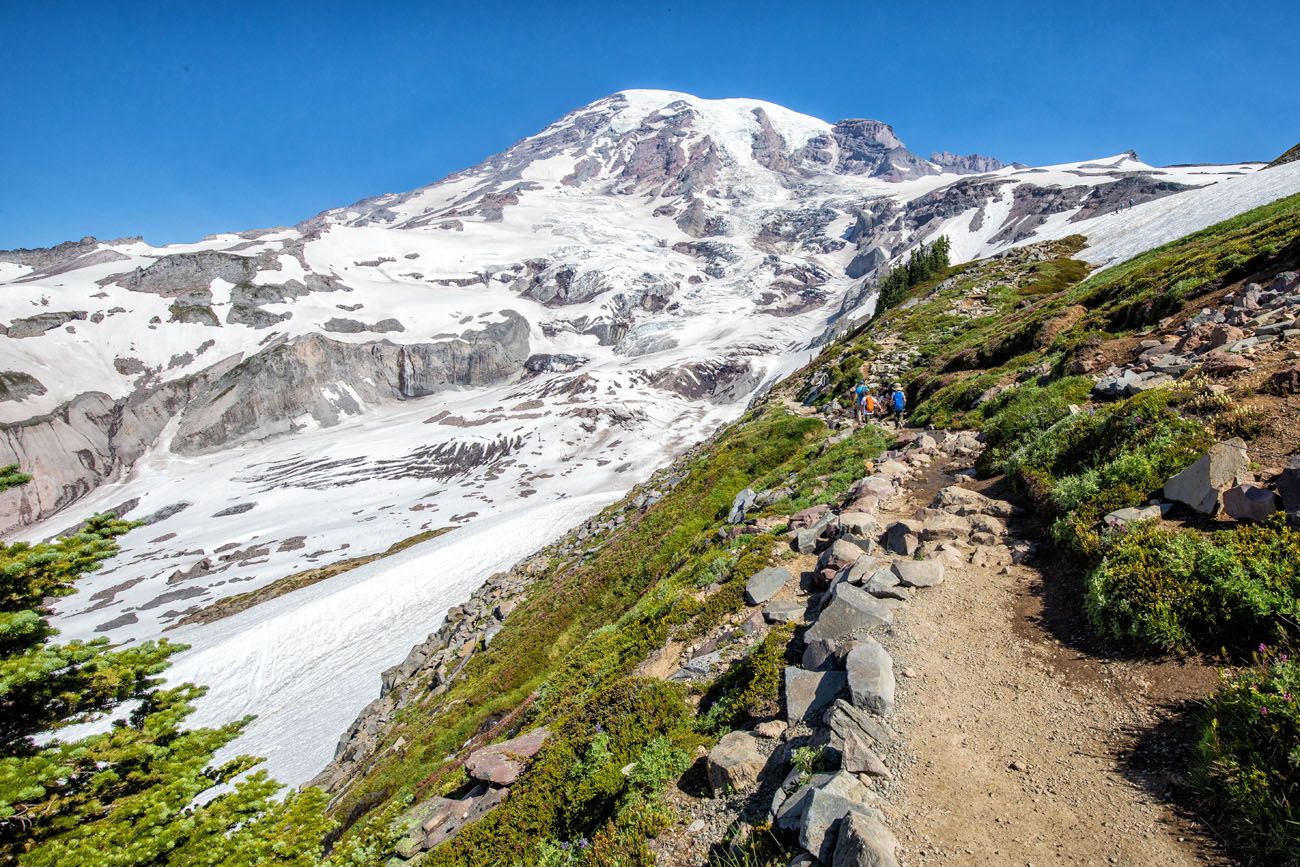
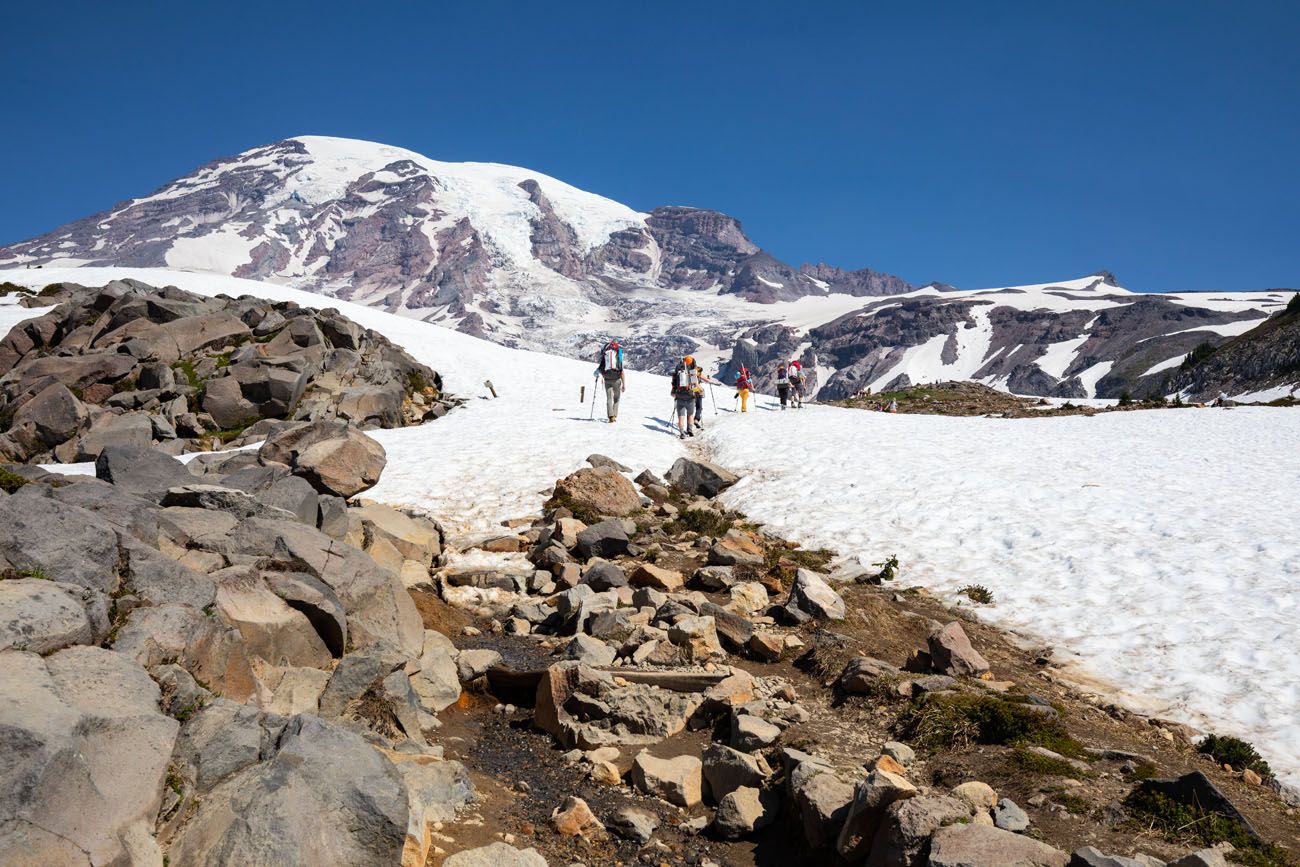
On the way down, you can take the detour out to Glacier Vista to get a closer view of the glacier on Mt. Rainier. It rejoins the Skyline Trail so it does not add much time or distance to the hike.
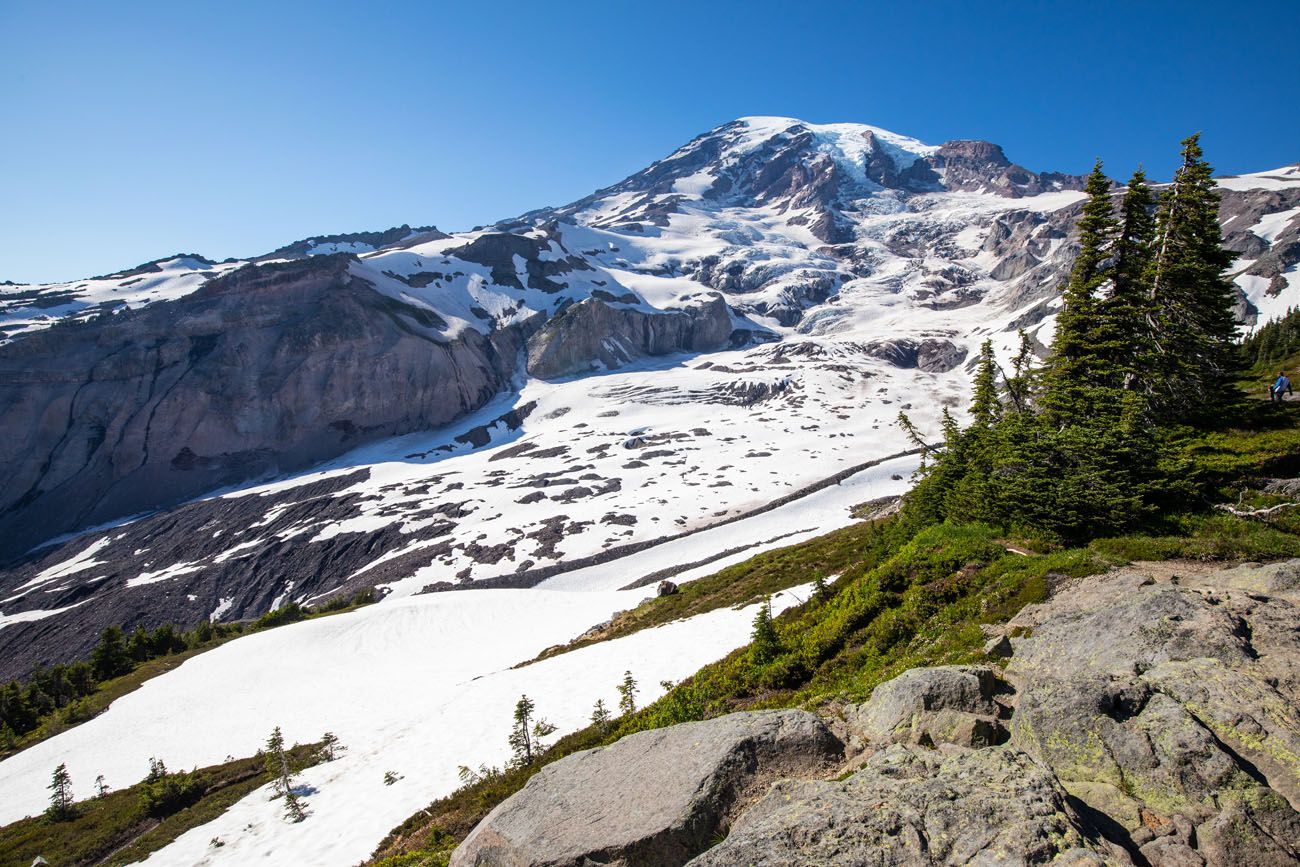
Glacier Vista
As you walk back to the visitor center, the trail splits several times. Continue to follow the signs to stay on the Skyline Trail. However, if you make a wrong turn, they all end up at the visitor center at some point (but the Skyline Trail will be the quickest way back). Once you start walking on a paved trail again you know you are getting close to the visitor center.
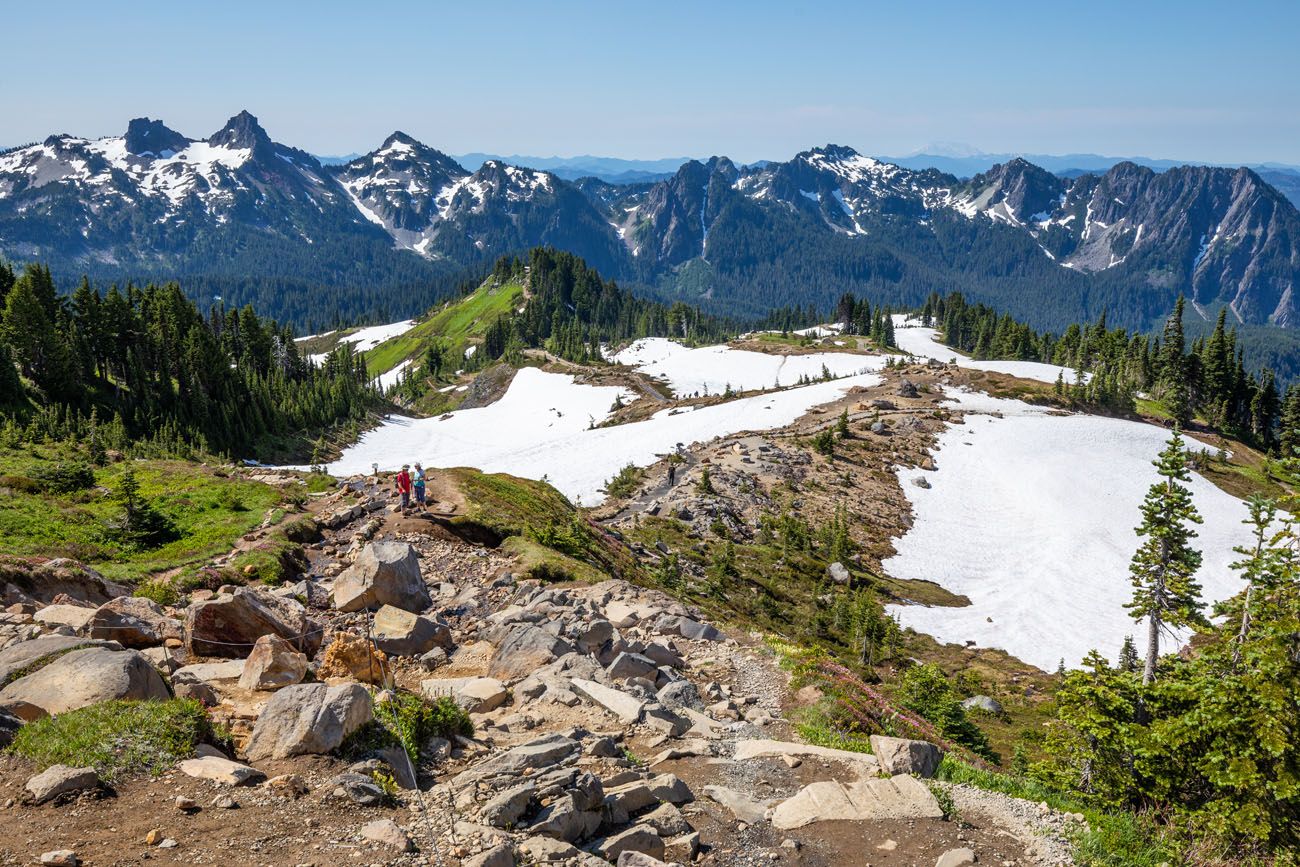
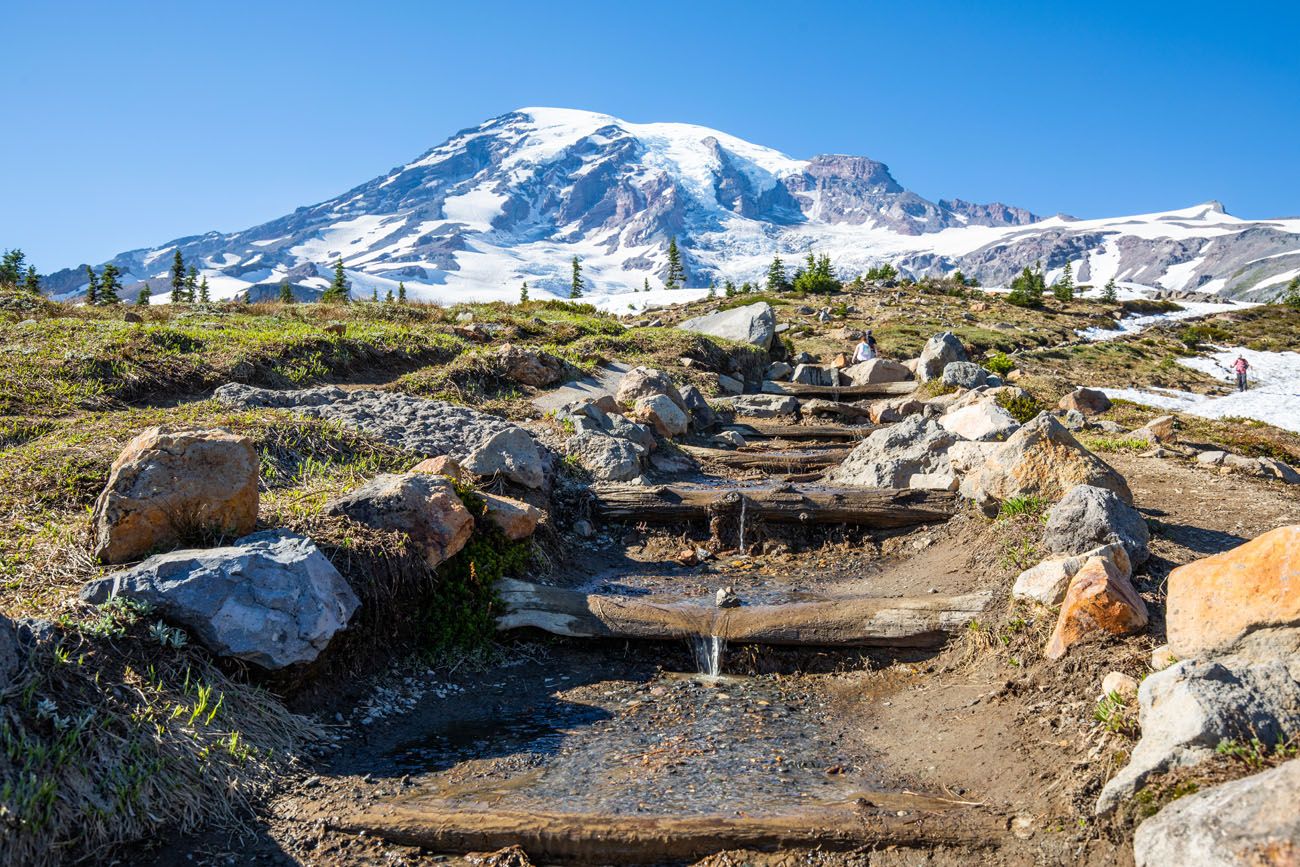
Tips to Have the Best Experience
To get a parking space, plan on arriving by 9 am, especially if you plan to visit Paradise in the summer months. If it is a Saturday, Sunday, or a holiday, arrive by 8 am to ensure you get a parking space.
Check the weather forecast before you do this hike.
Leave no trace. When you are in the park, practice the seven principles of Leave No Trace. This includes packing out what you bring into the park, be considerate of other hikers, stay on the trail, and do not remove anything from the park.
Get updates on trail conditions and closures on the National Park Service website.
For more great hikes in Mount Rainier National Park, take a look at our hiking guide:
15 Epic Hikes in Mount Rainier National Park
From short, easy trails to full day efforts, here are 15 amazing hikes to do in Mount Rainier National Park.What to Bring on the Hike
Hiking shoes. Don’t do this hike in anything other than hiking shoes or hiking boots. There’s a good chance you will hike through snow, even in the summer.
Hiking poles. Hiking poles take the stress off of your legs and help to ease leg pain and fatigue. They also help you keep your balance on the snow crossings.
Crampons can also be helpful for the snow crossings, although we did just fine without them.
Water and snacks. At least 2 liters of water in the summer.
Sunscreen, hat, and sunglasses. For most of this hike you will be exposed to the sun, with very little shade.
Camera. Even a smartphone will do.
Rain jacket or fleece. Be prepared for all weather conditions, even snow in the summer months. Pack a rain jacket and/or fleece and even another layer of clothing.
Essential Hiking Gear: What Should You Bring on a Day Hike?
If you are new to hiking or are curious about what you should bring on a hike, check out our Hiking Gear Guide. Find out what we carry in our day packs and what we wear on the trails.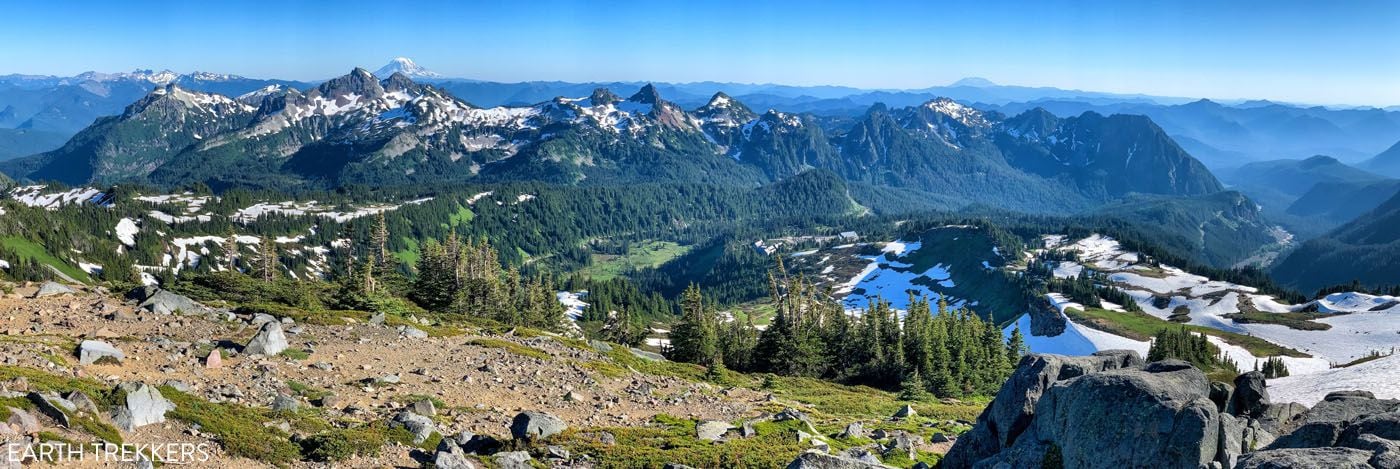
Panorama from Panorama Point, taken with an iPhone.
If you have any questions about how to hike the Skyline Trail Loop, let us know in the comment section below. Happy hiking!!
More Information for Your Trip to Washington
If this is part of a bigger road trip through the USA, visit our United States Travel Guide and our Washington Travel Guide for more inspiration and travel planning tips.
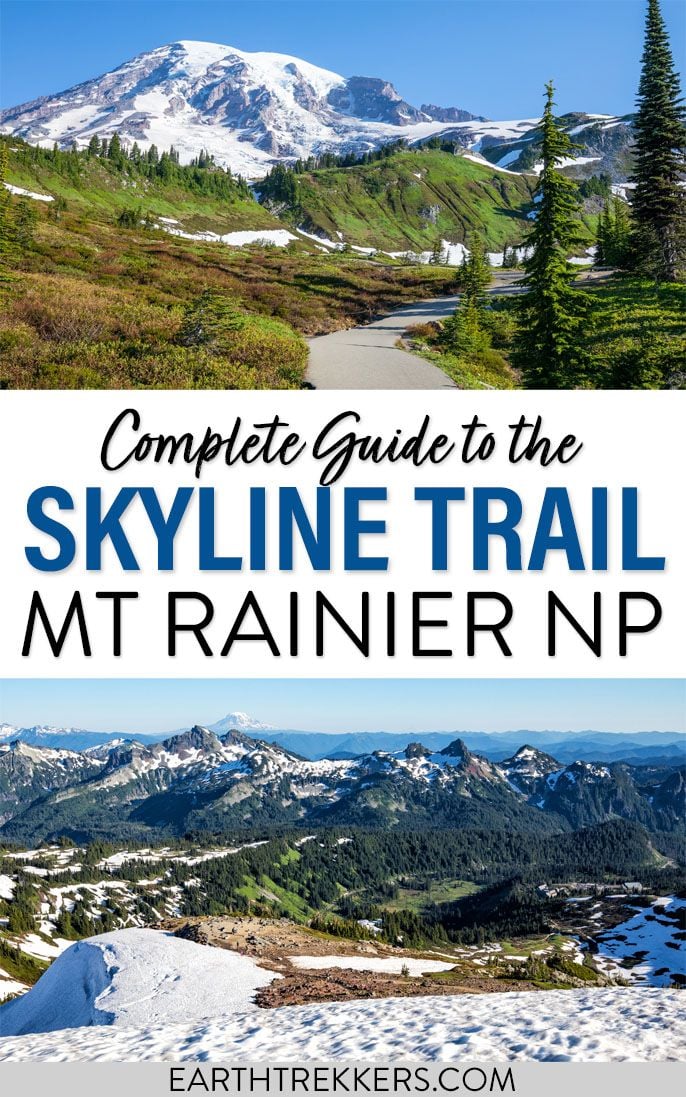
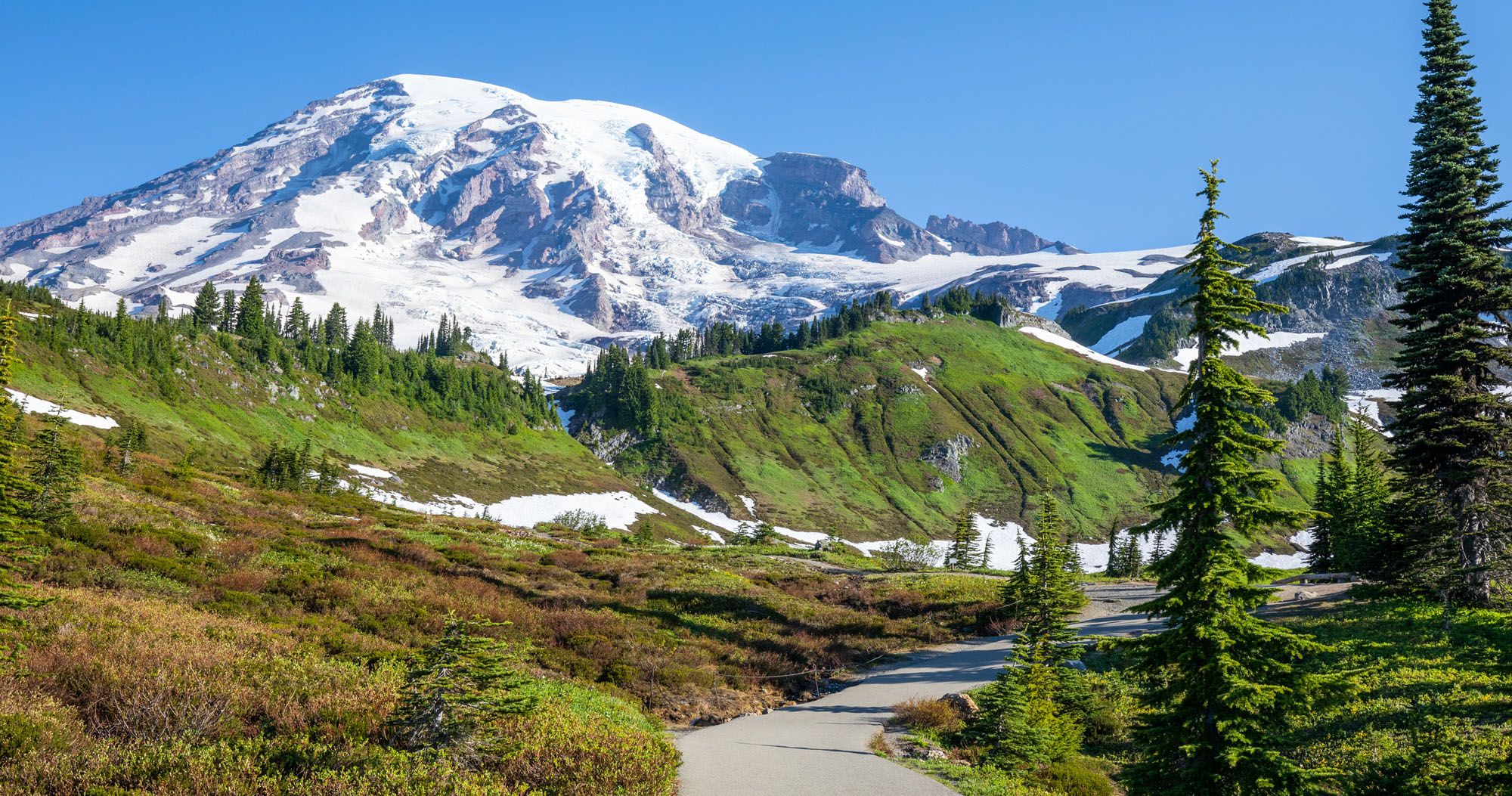
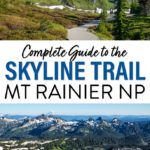
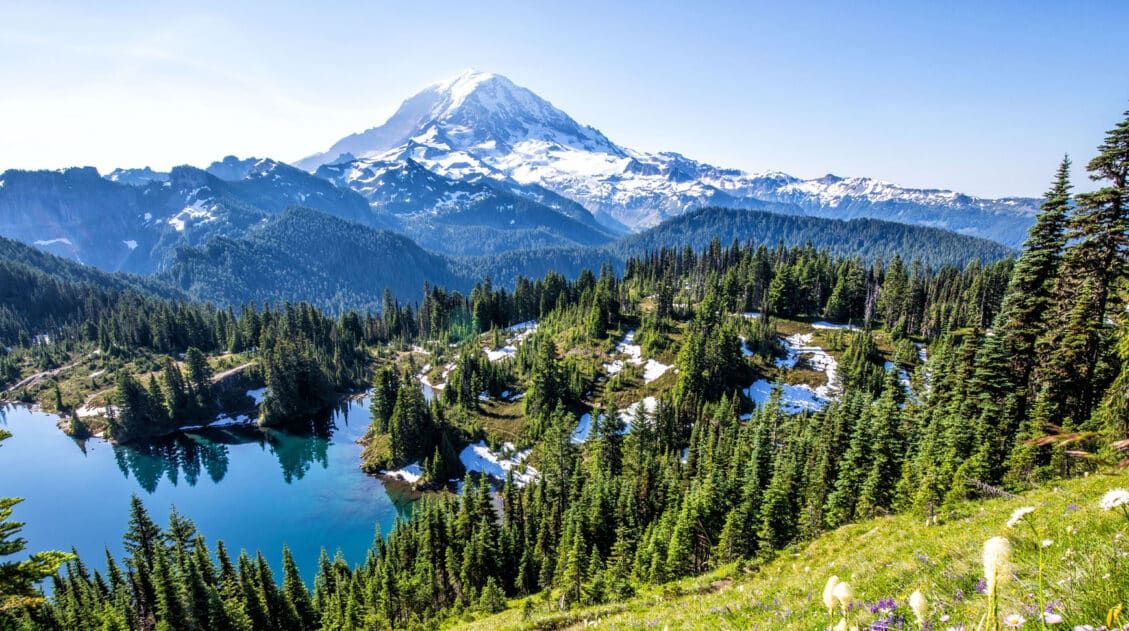
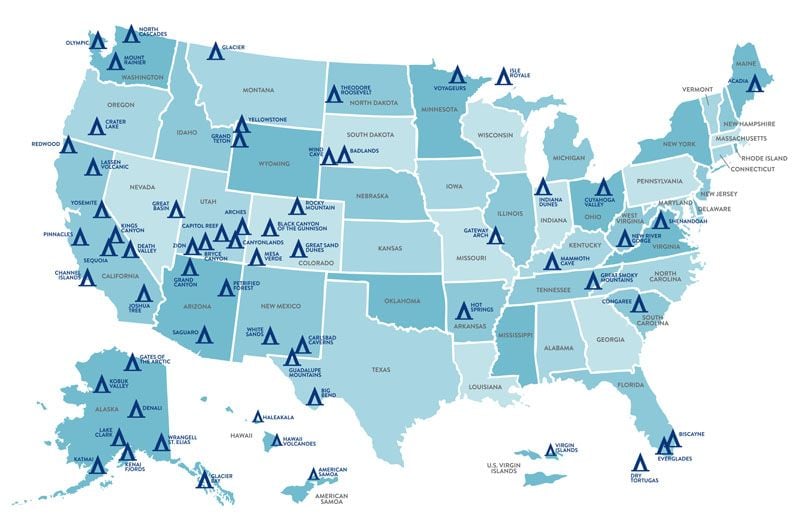
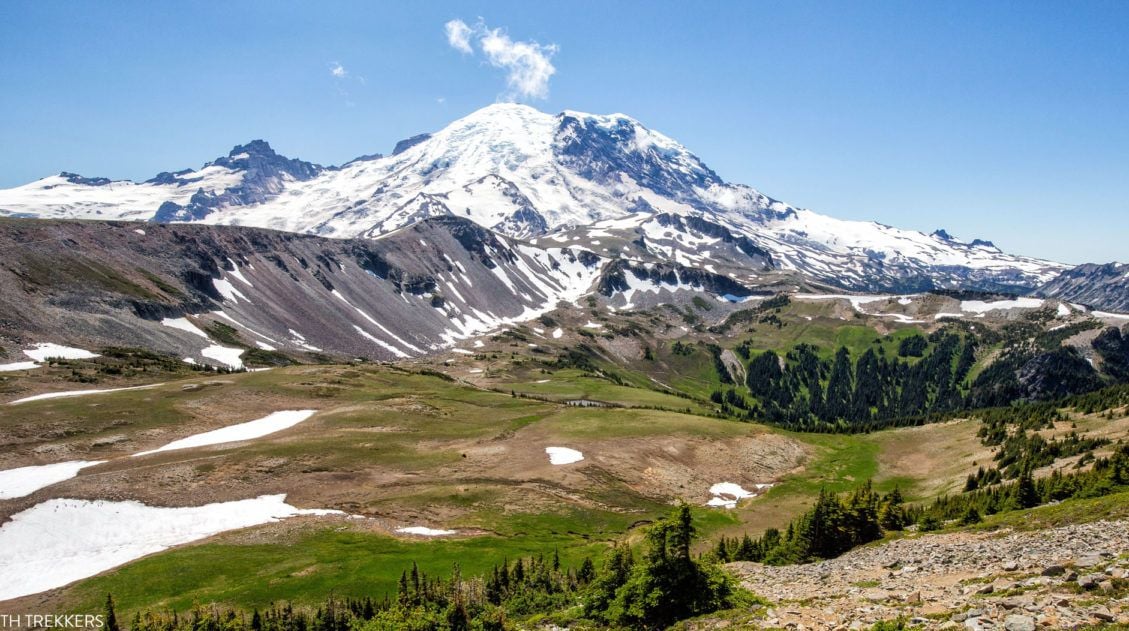
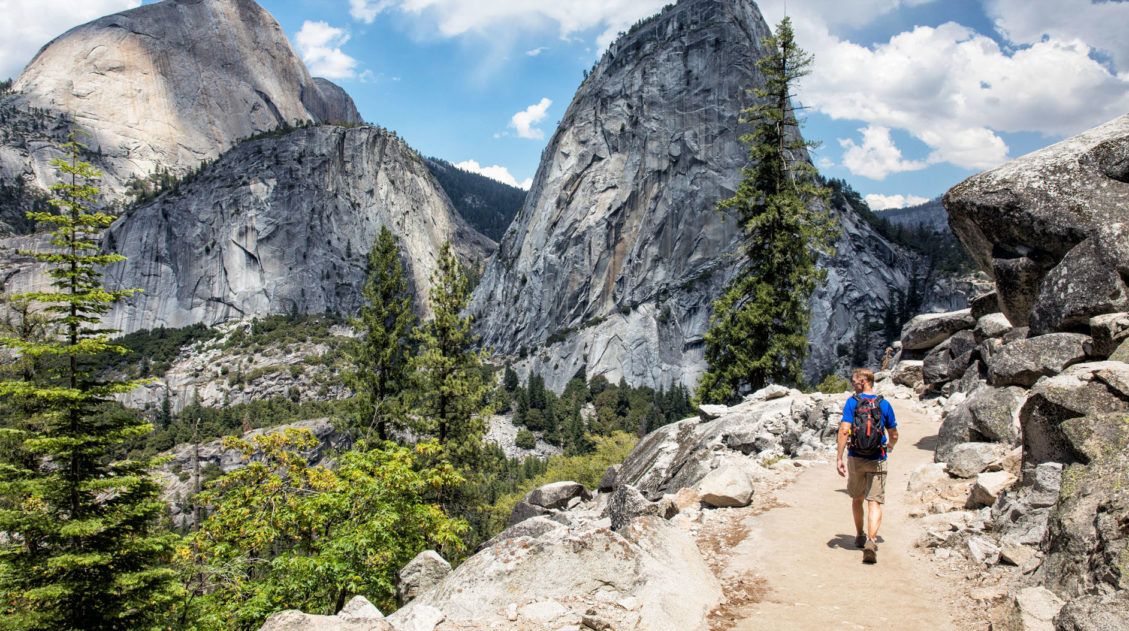
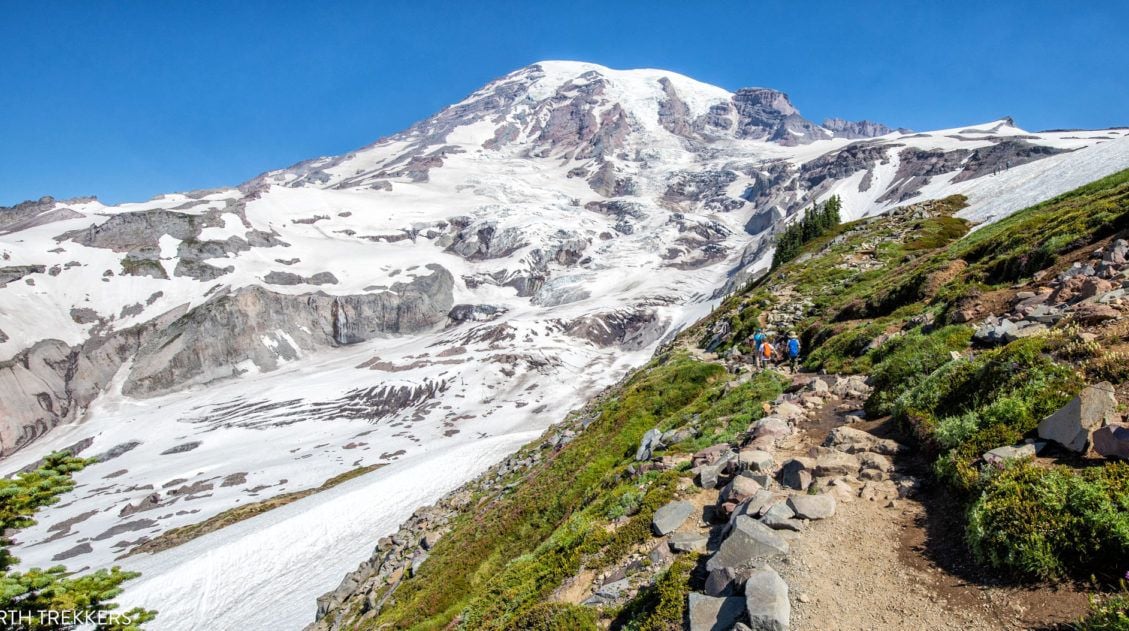
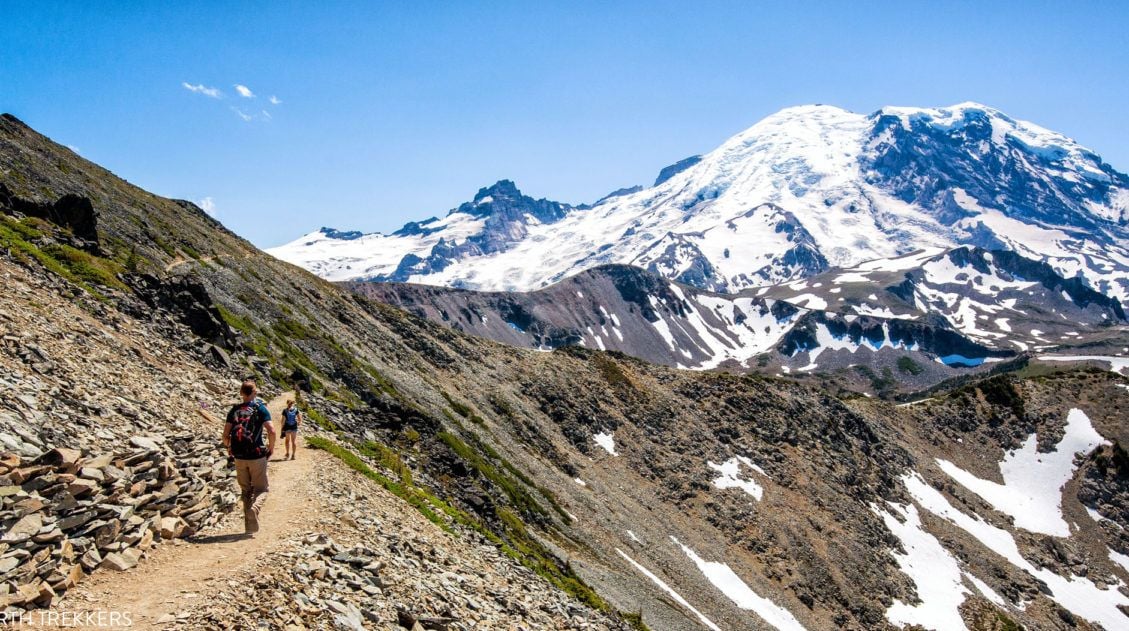
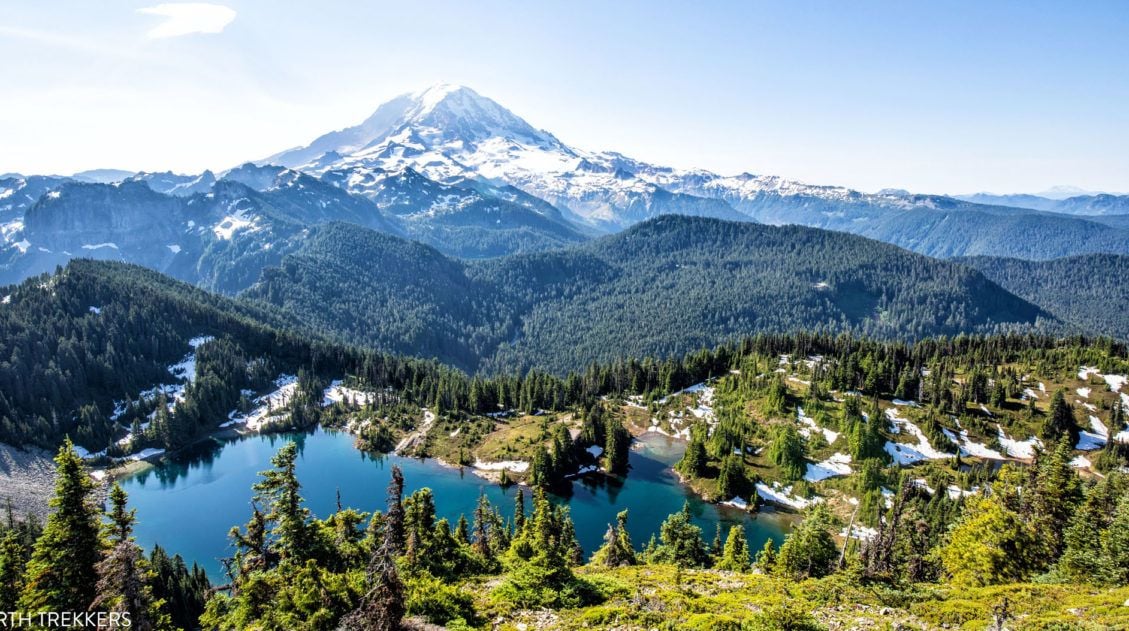
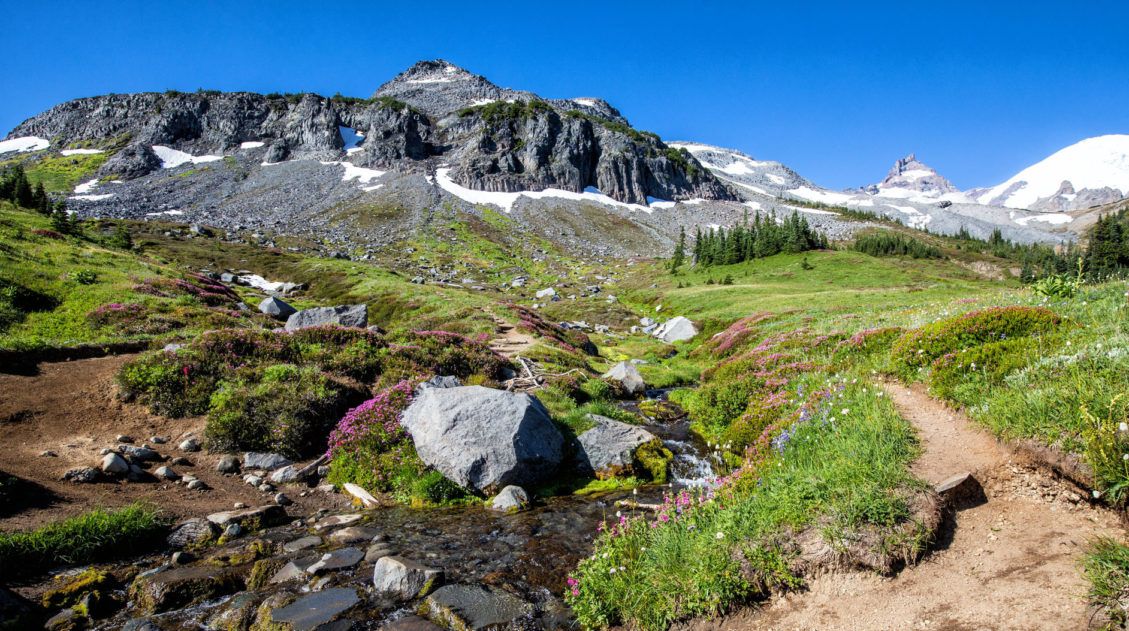
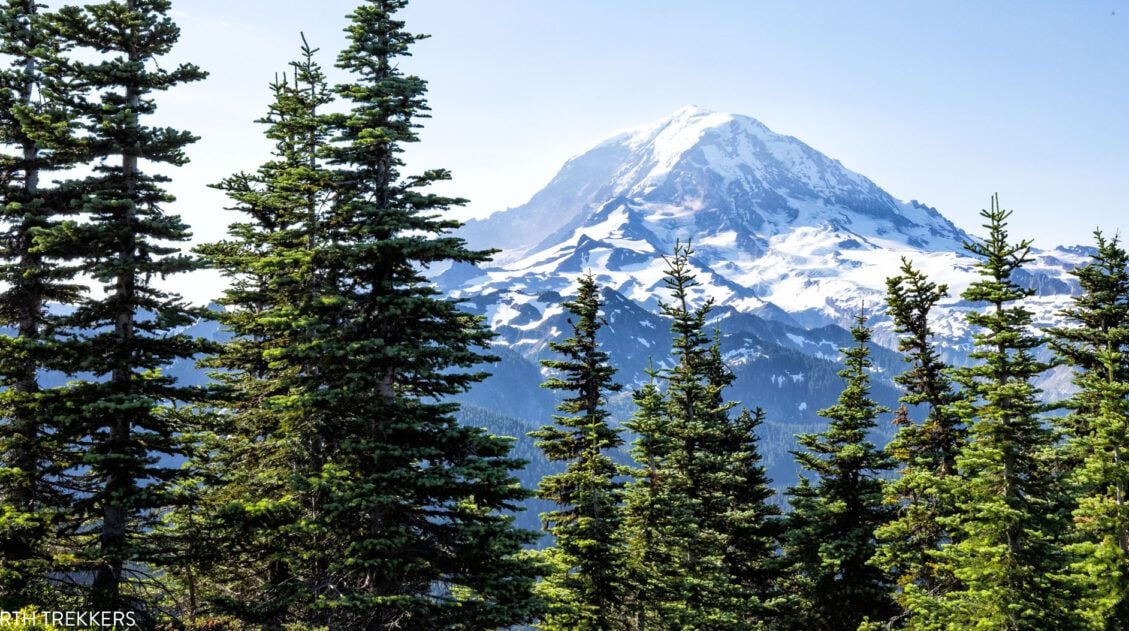
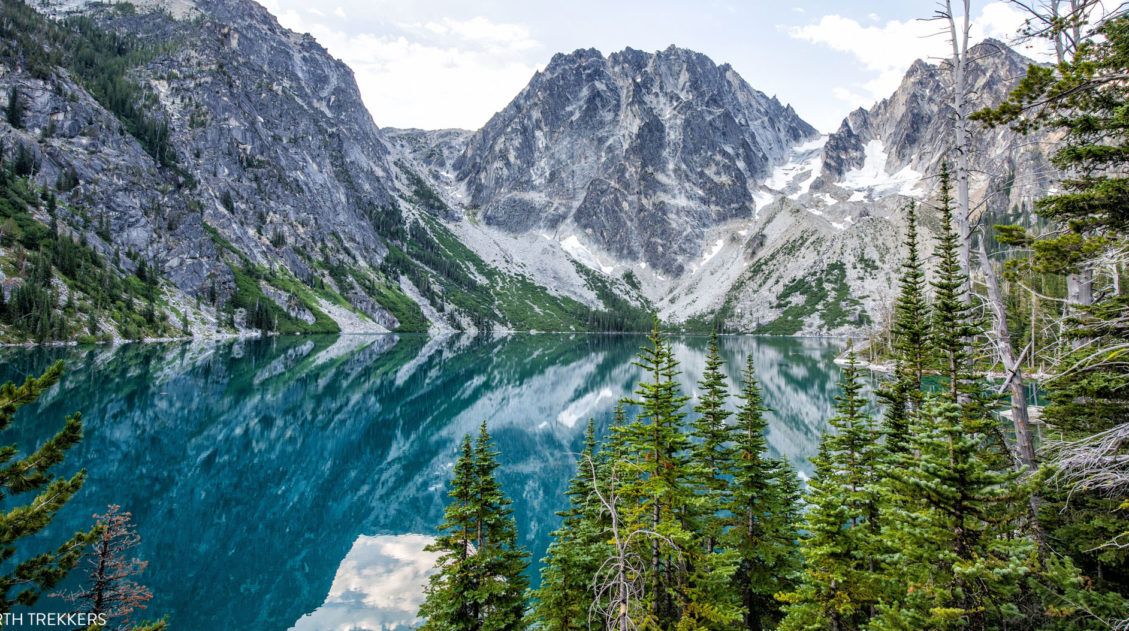
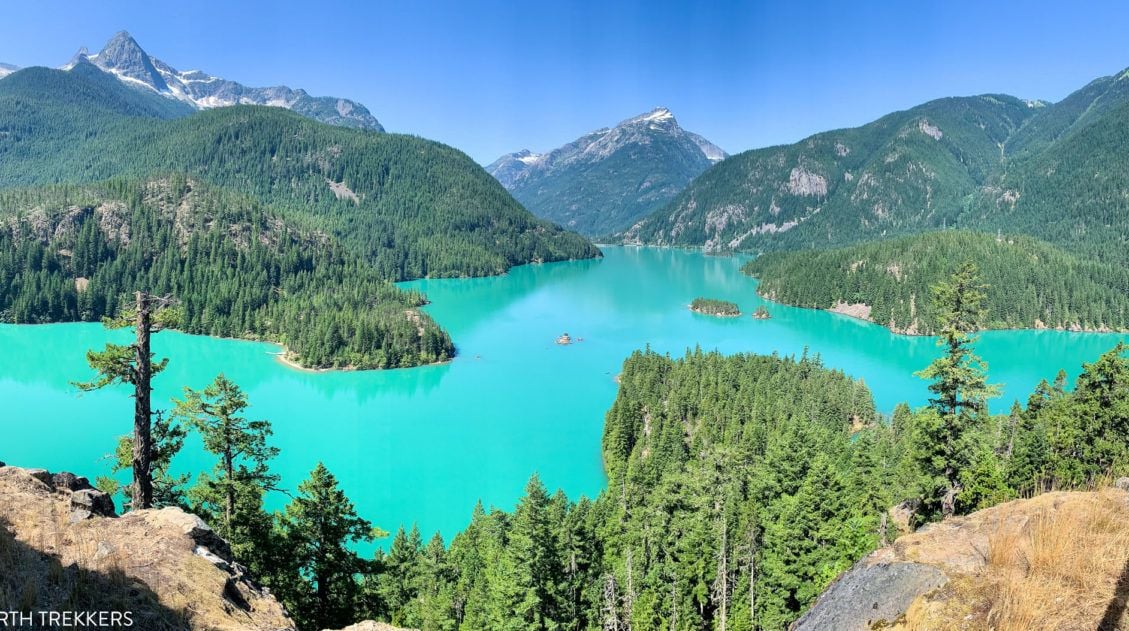
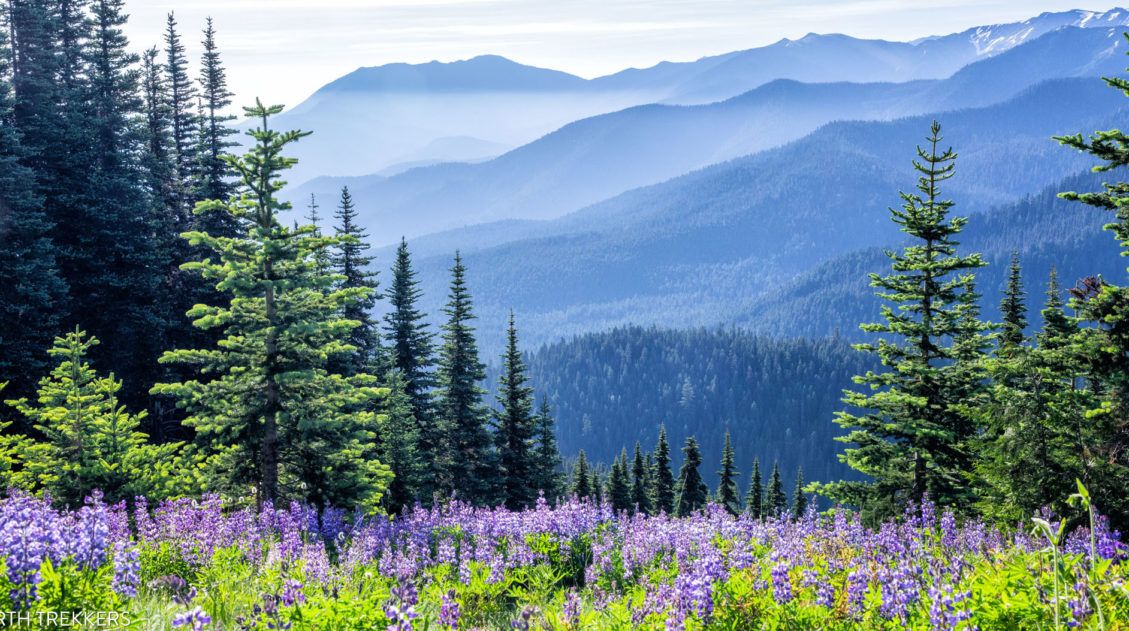
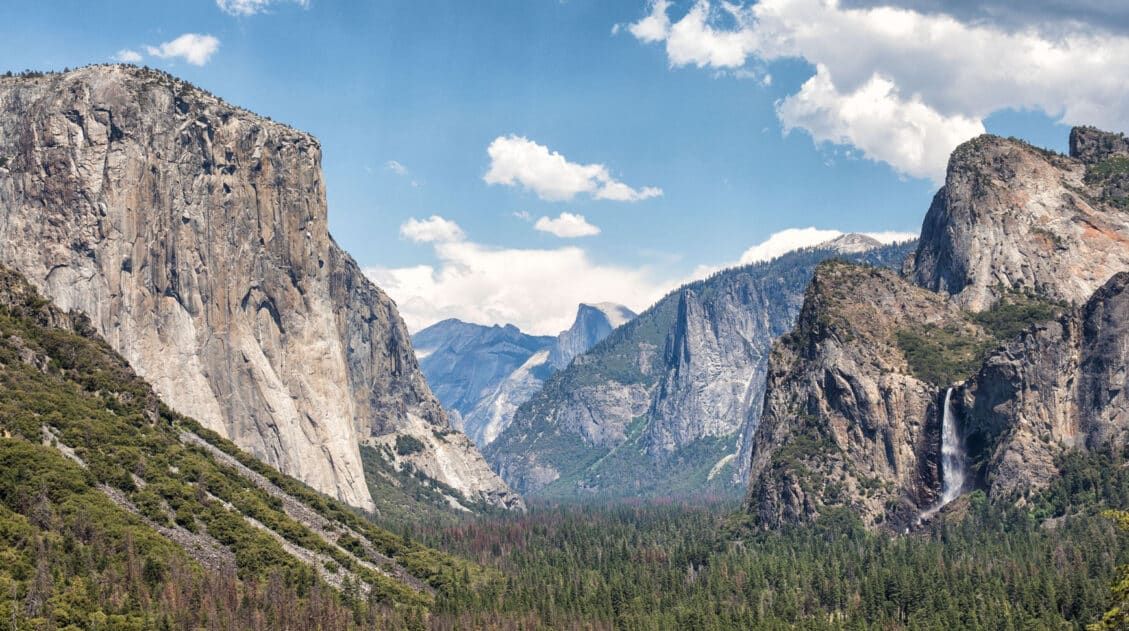
Comments 18